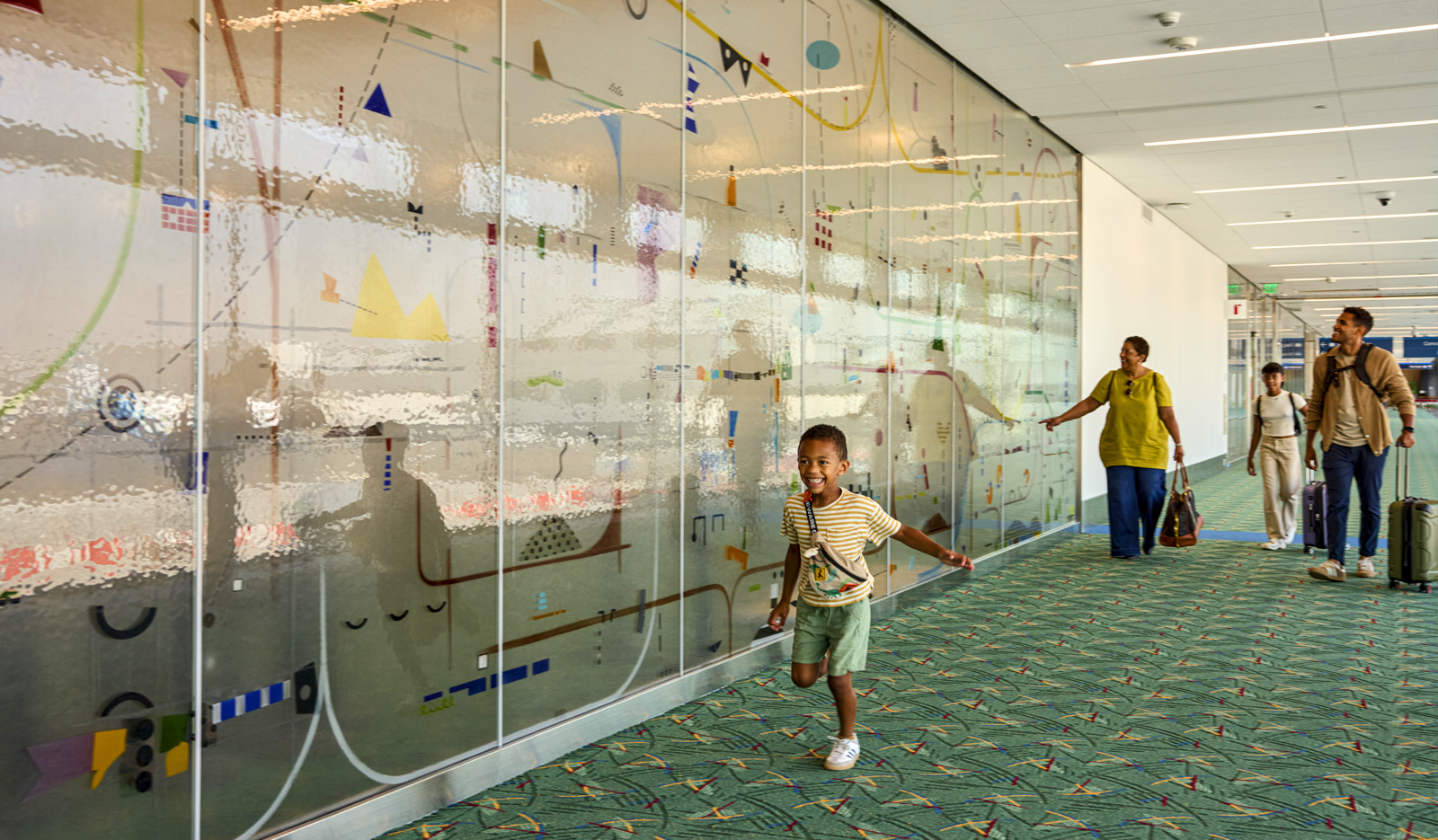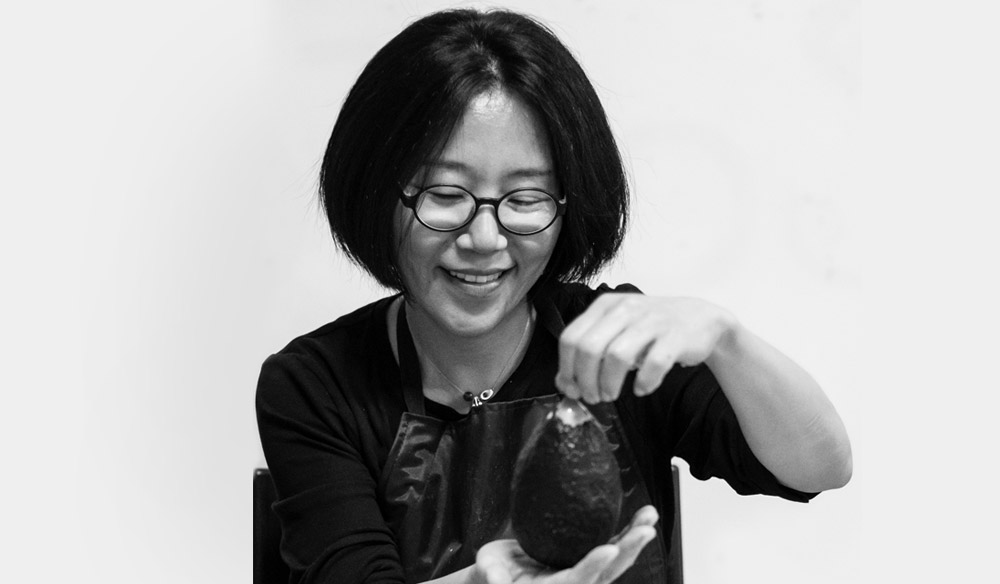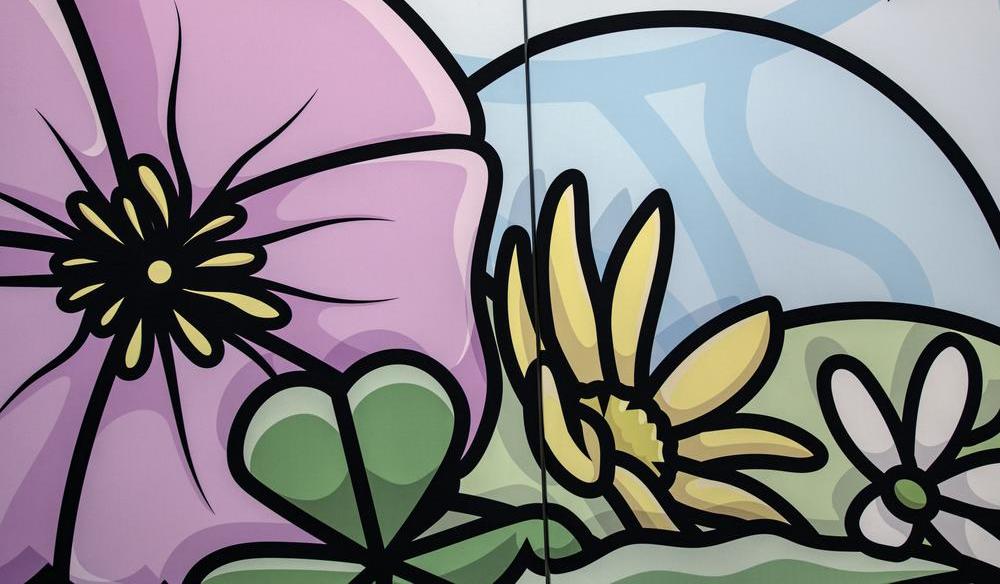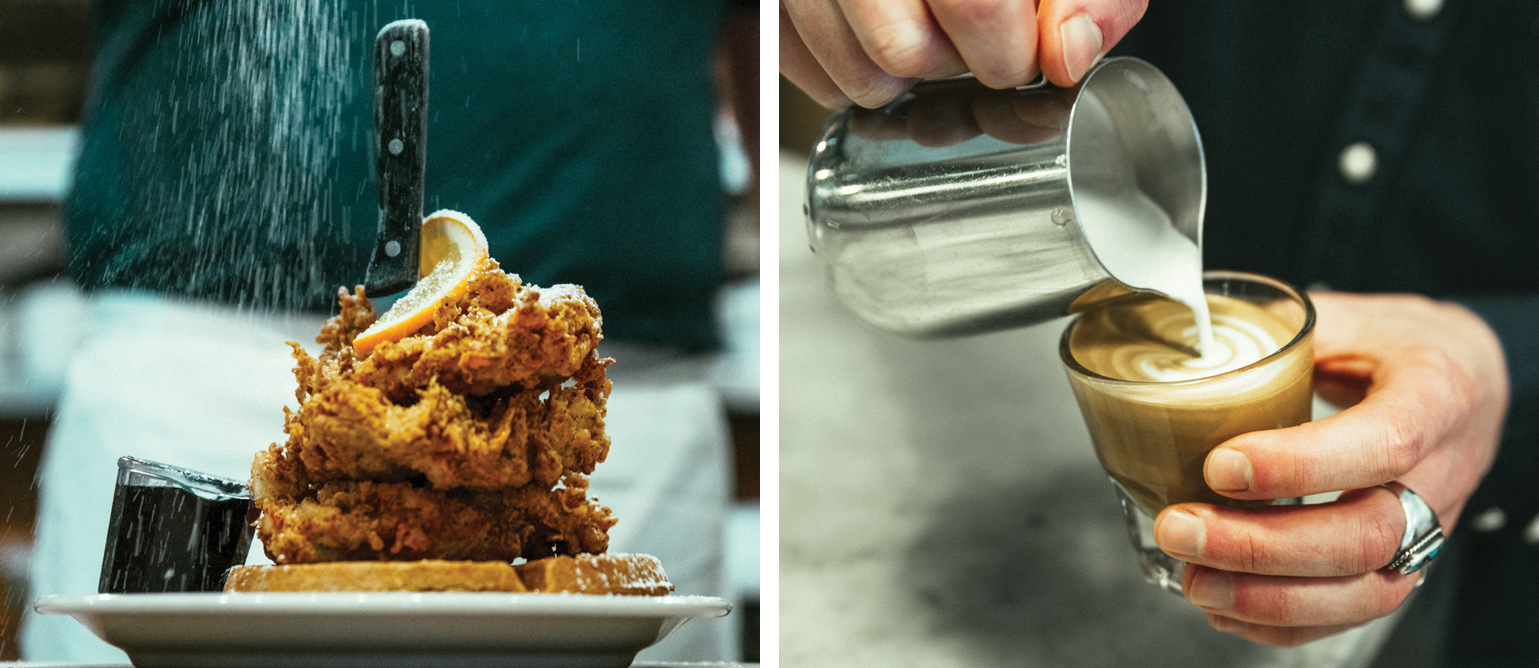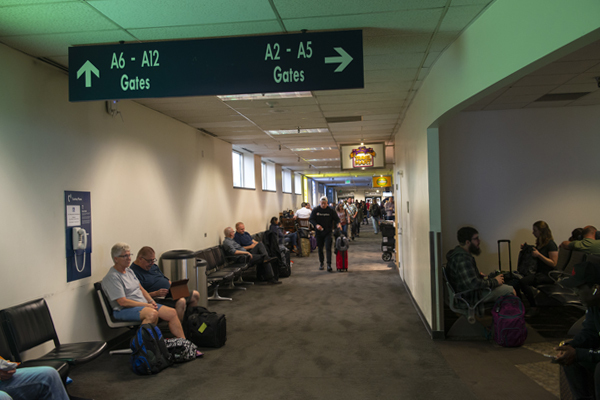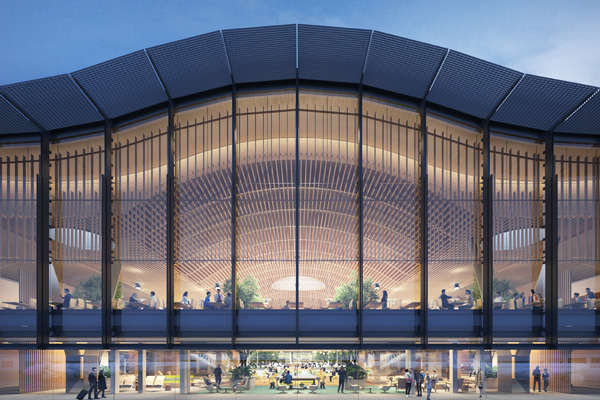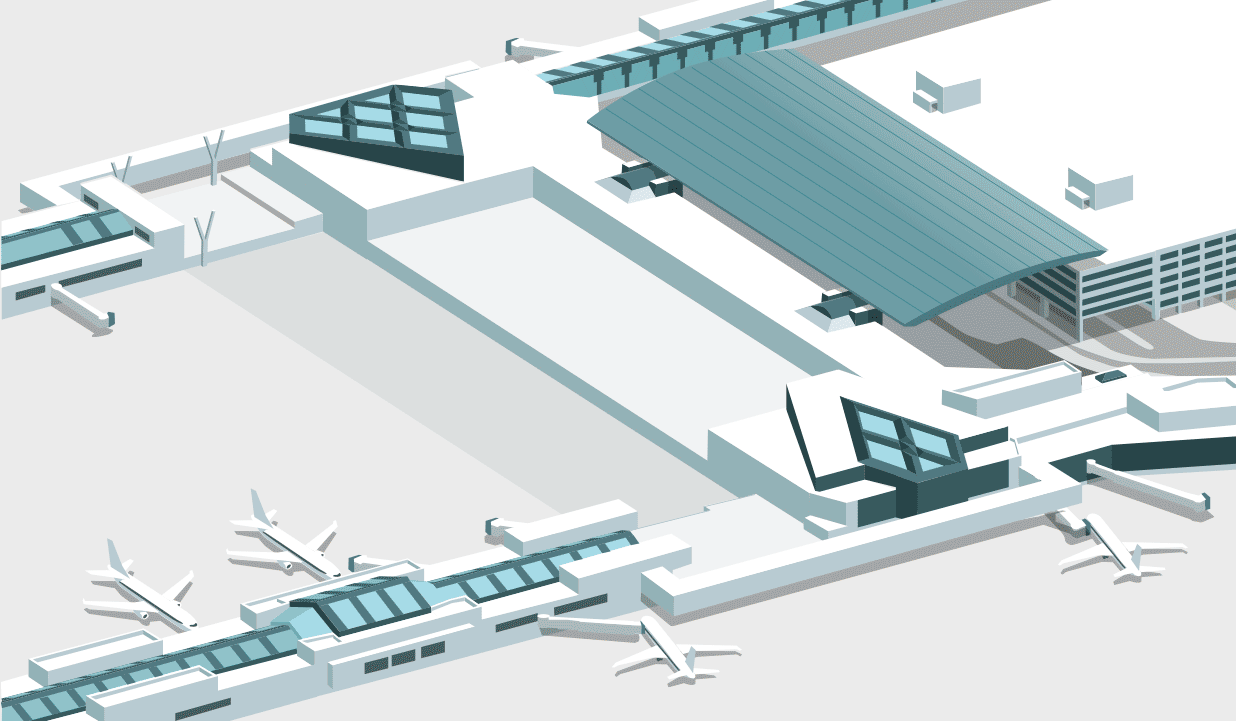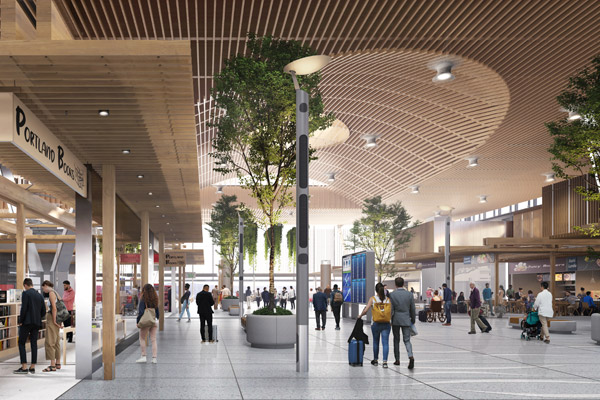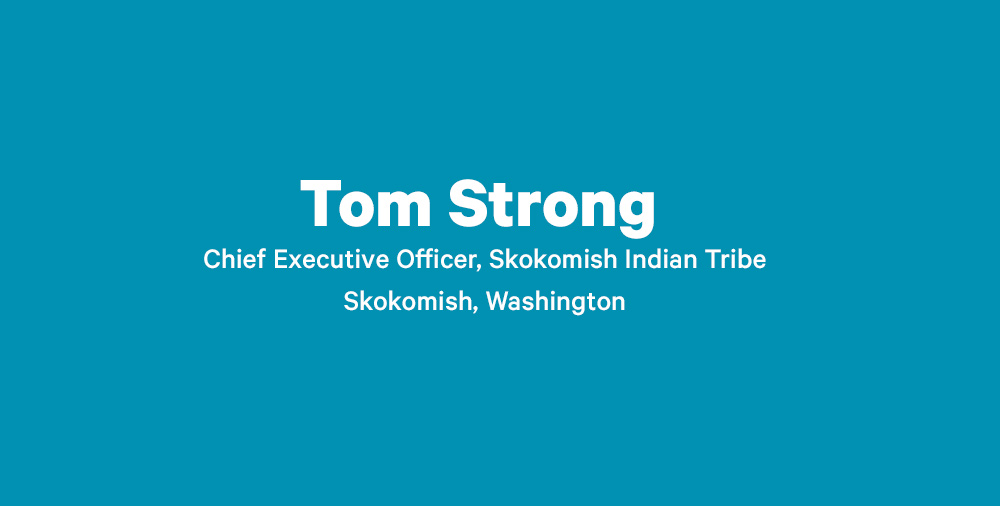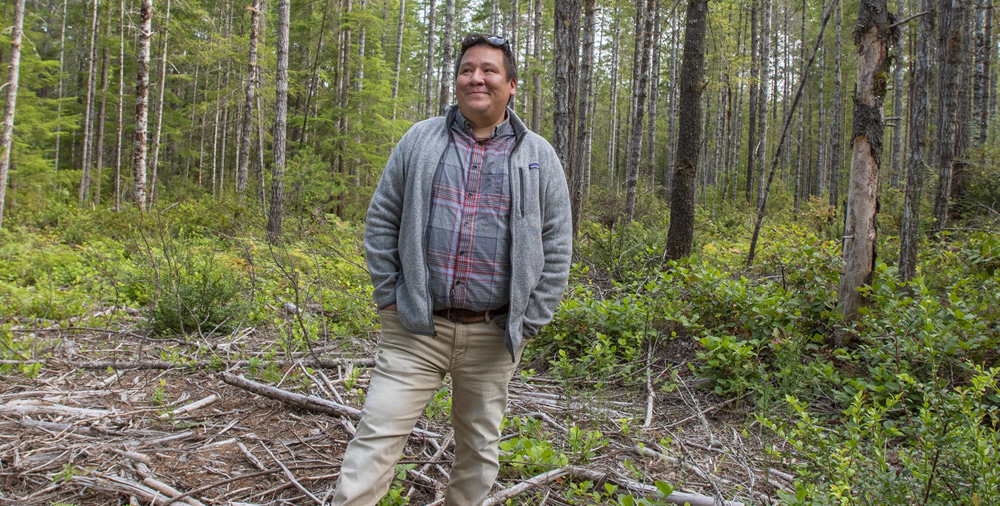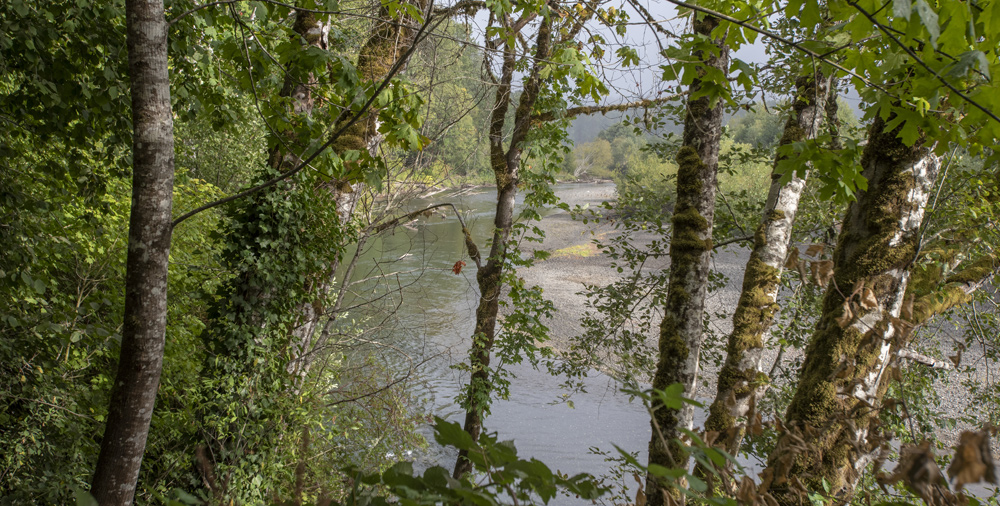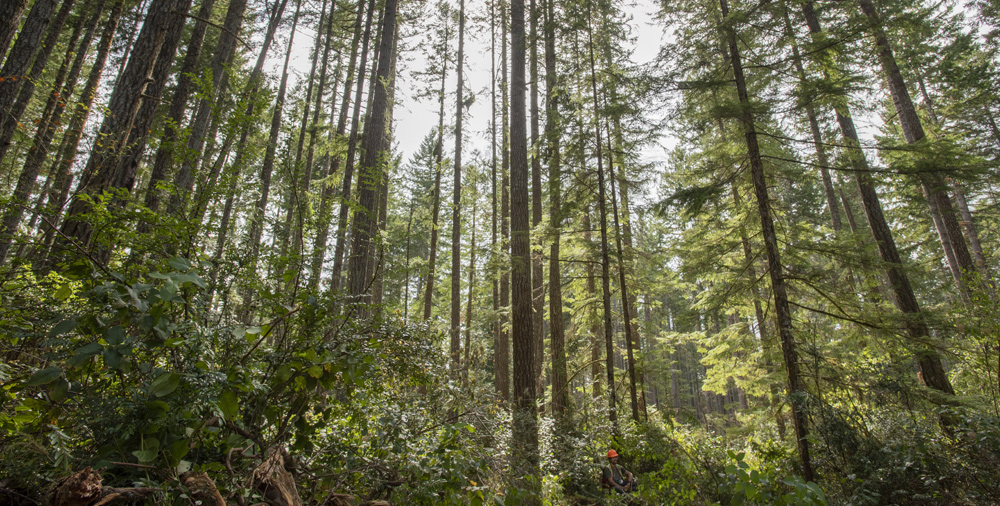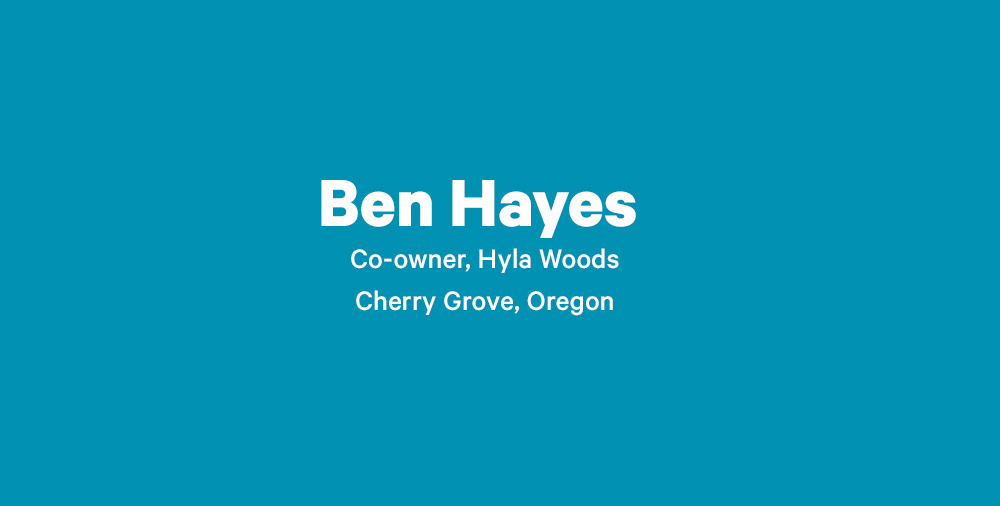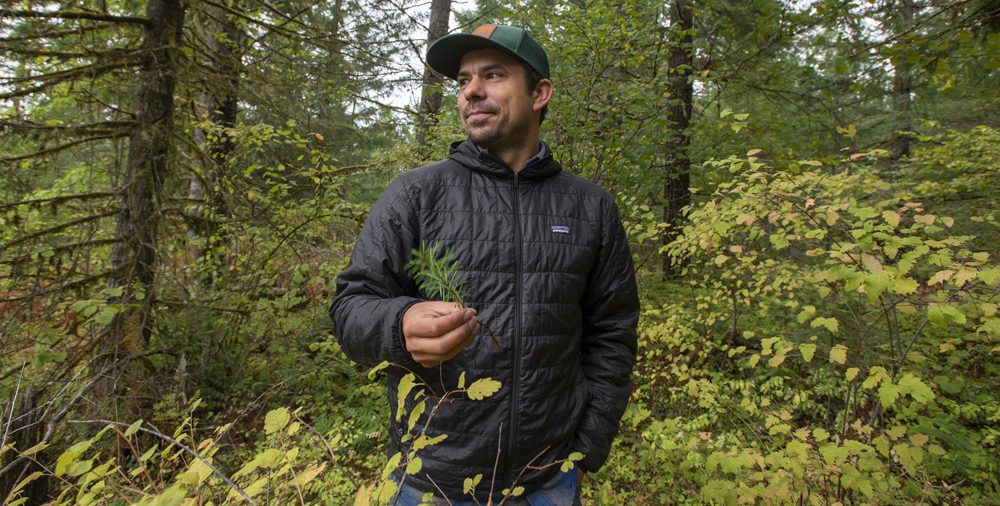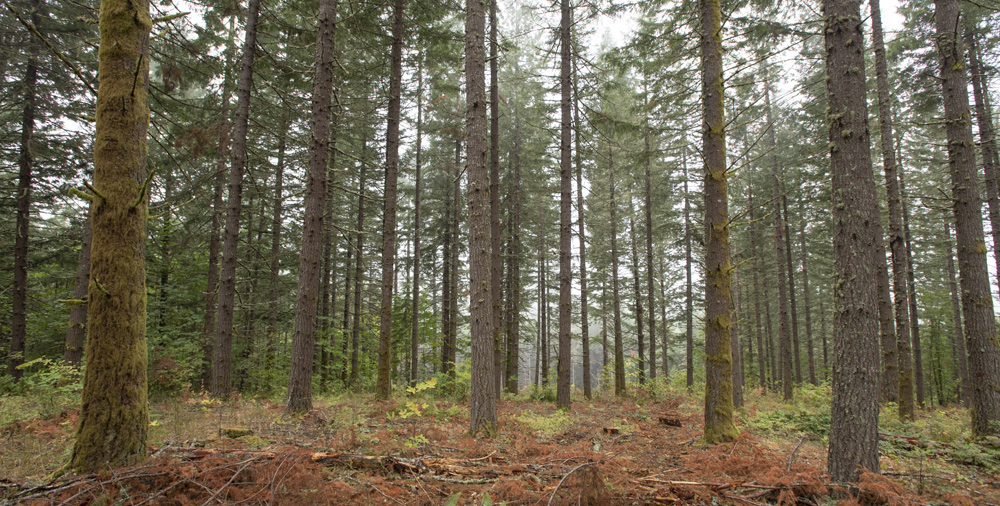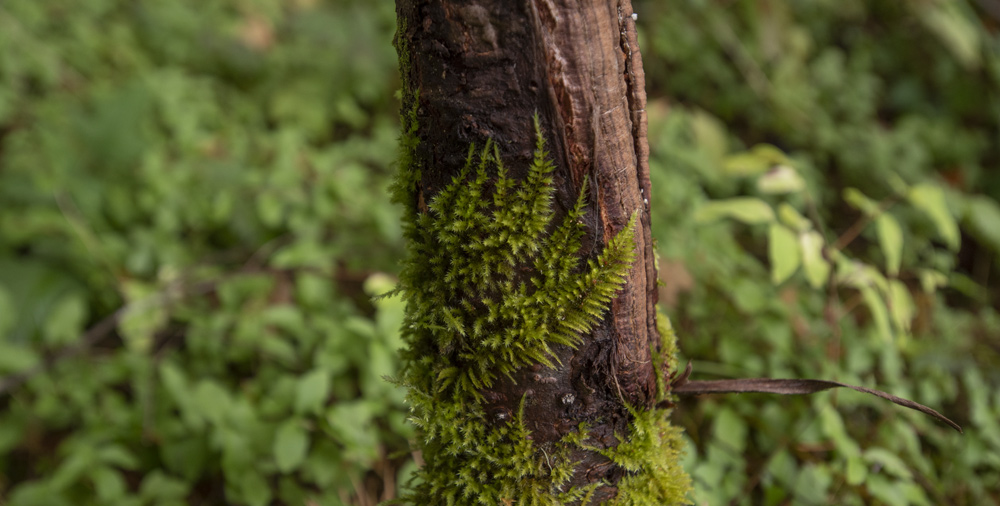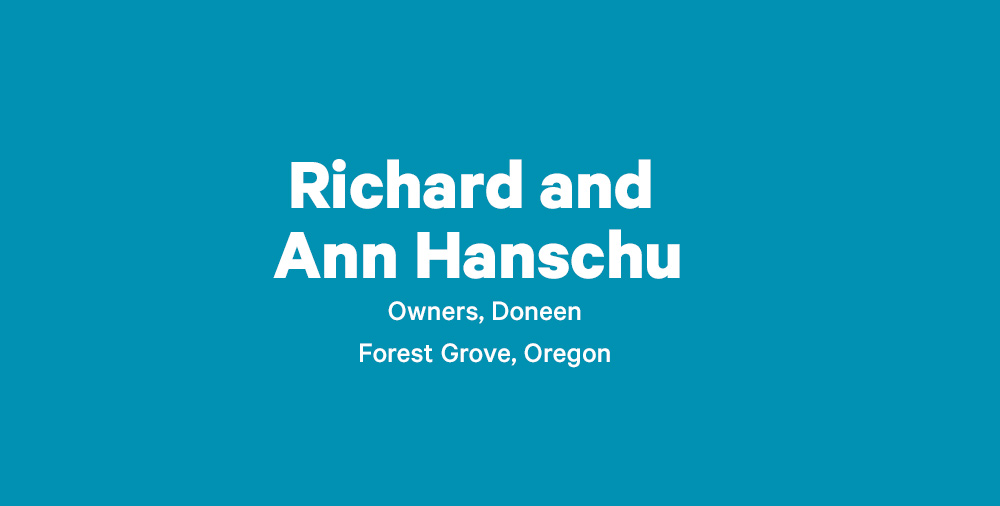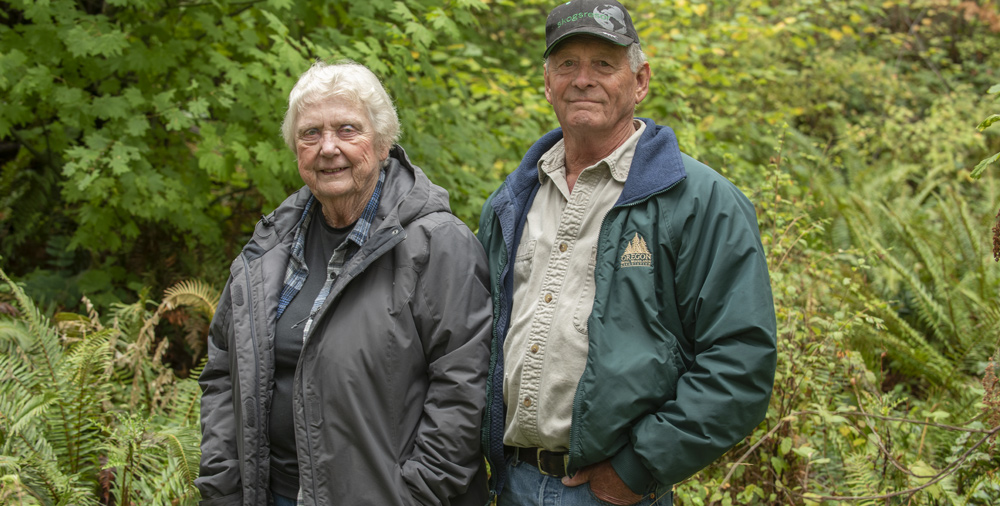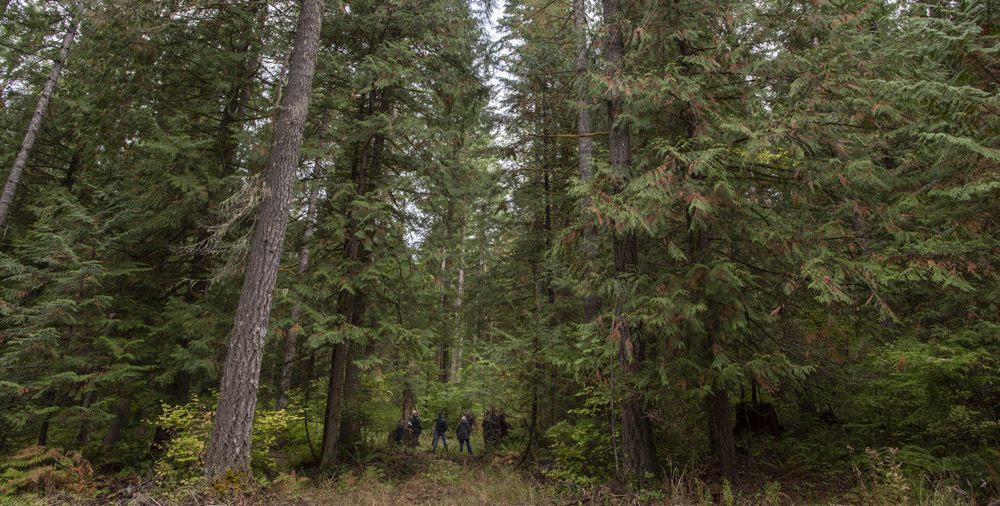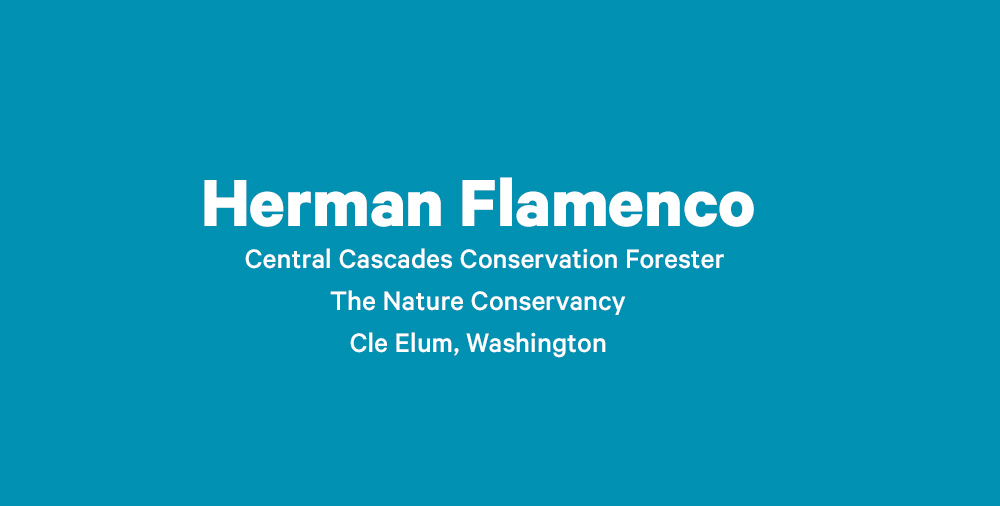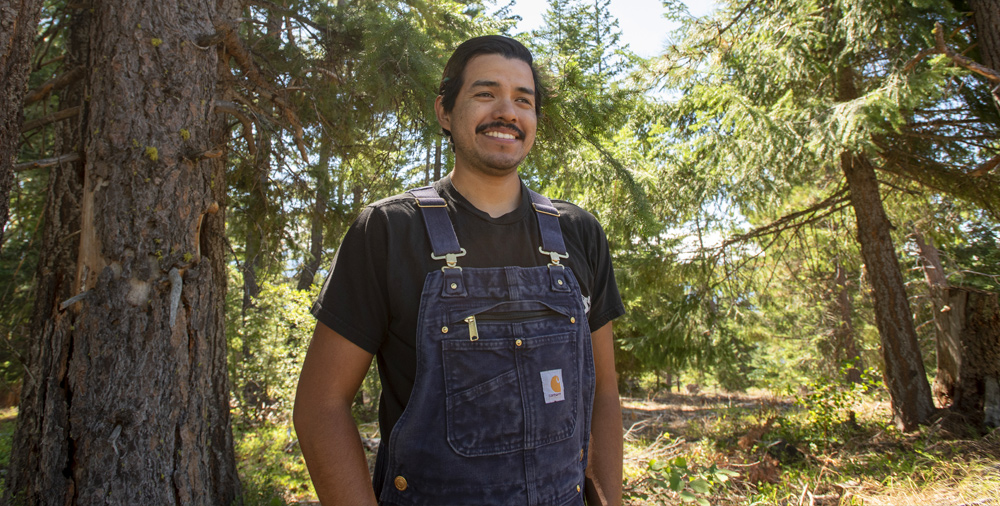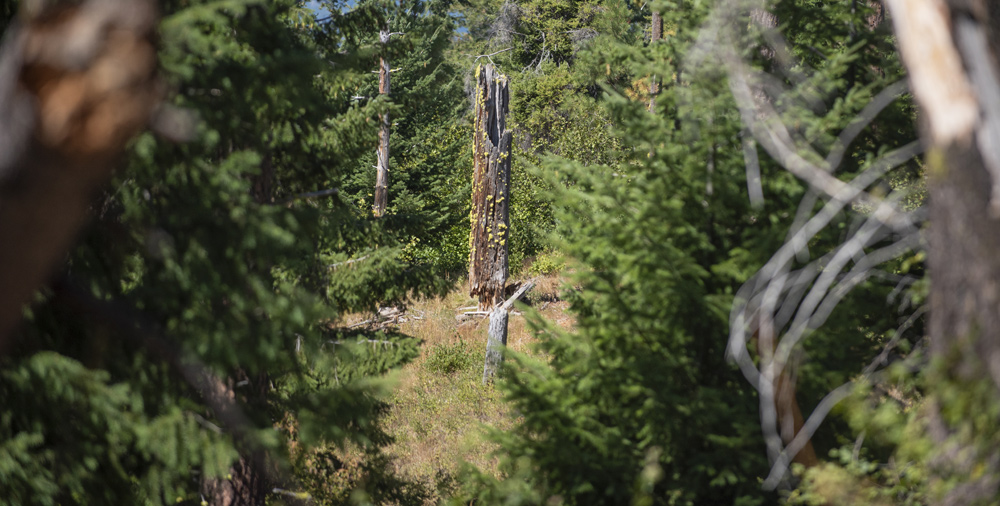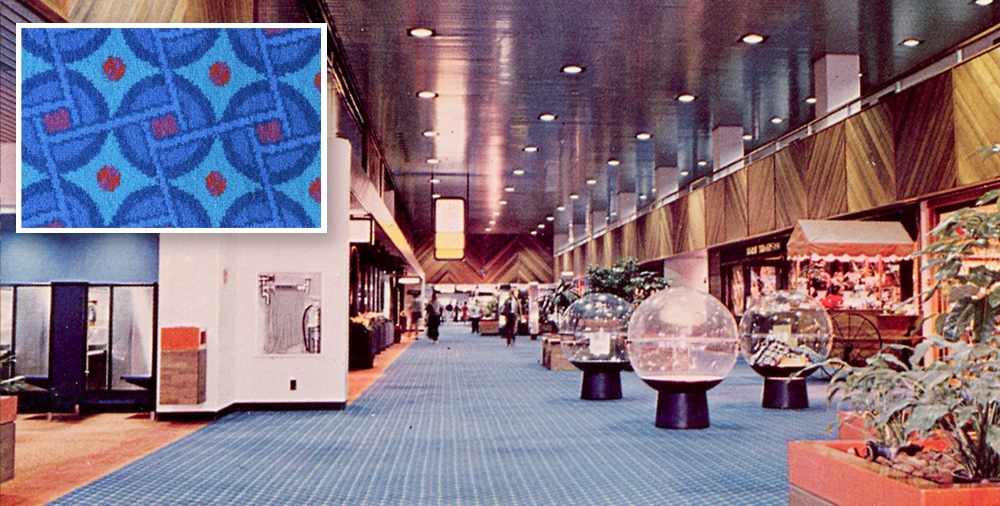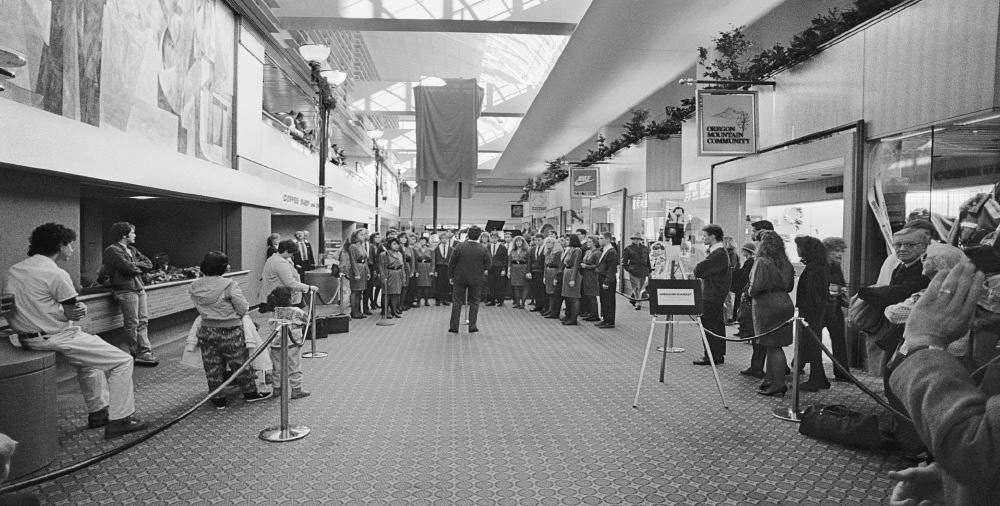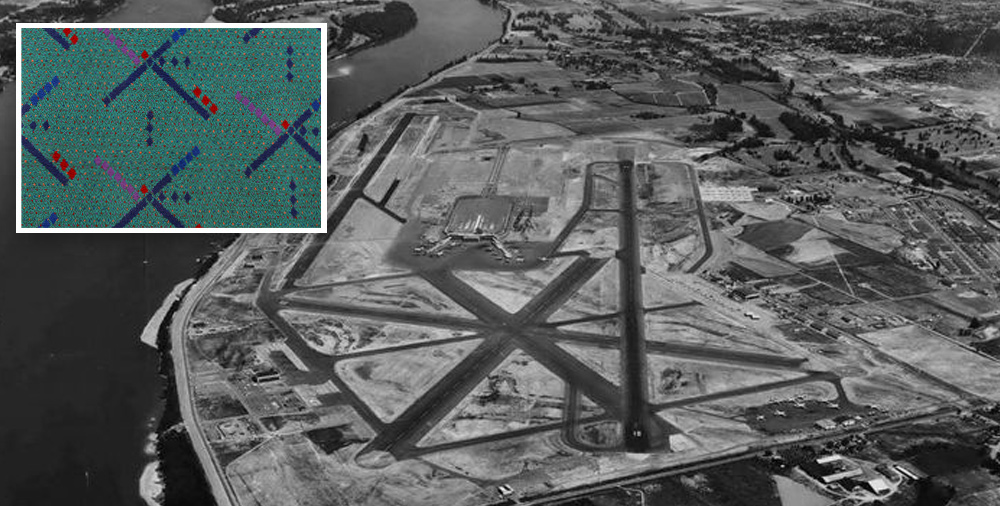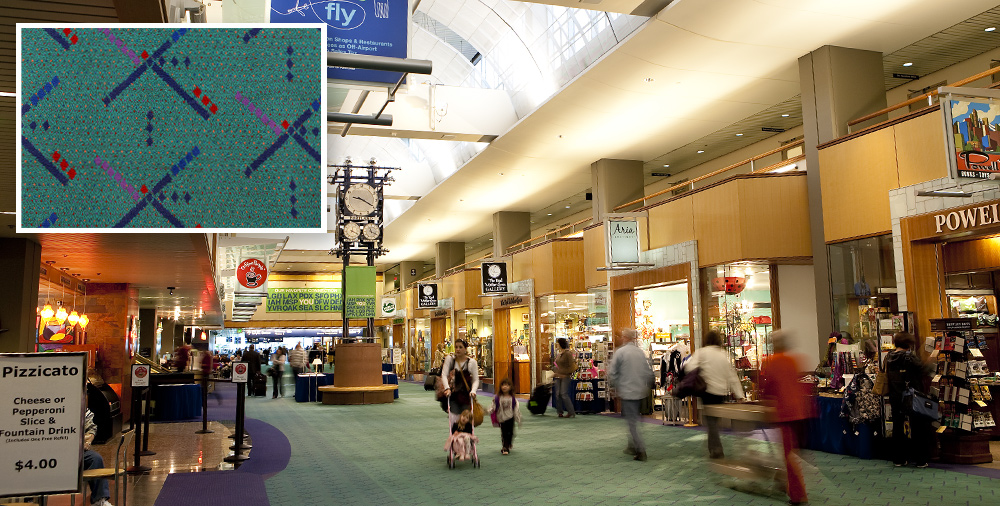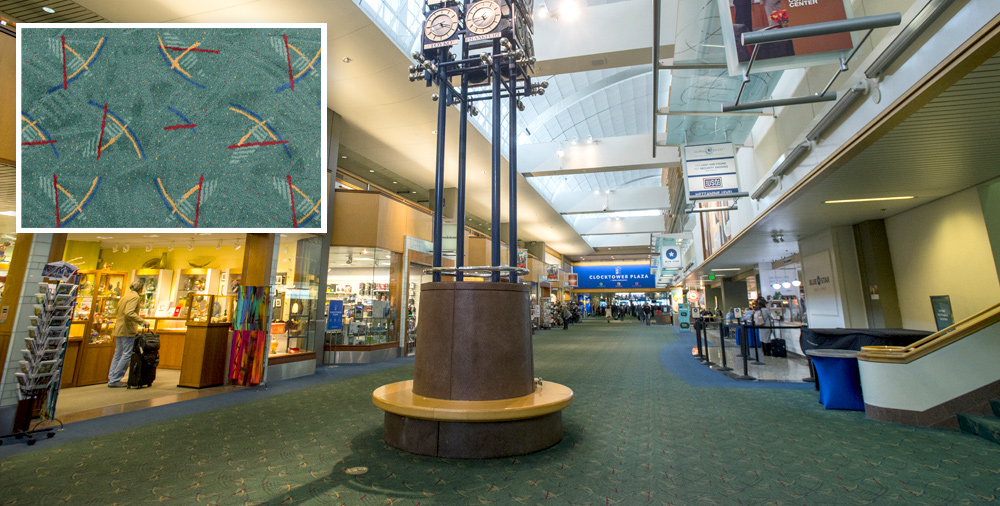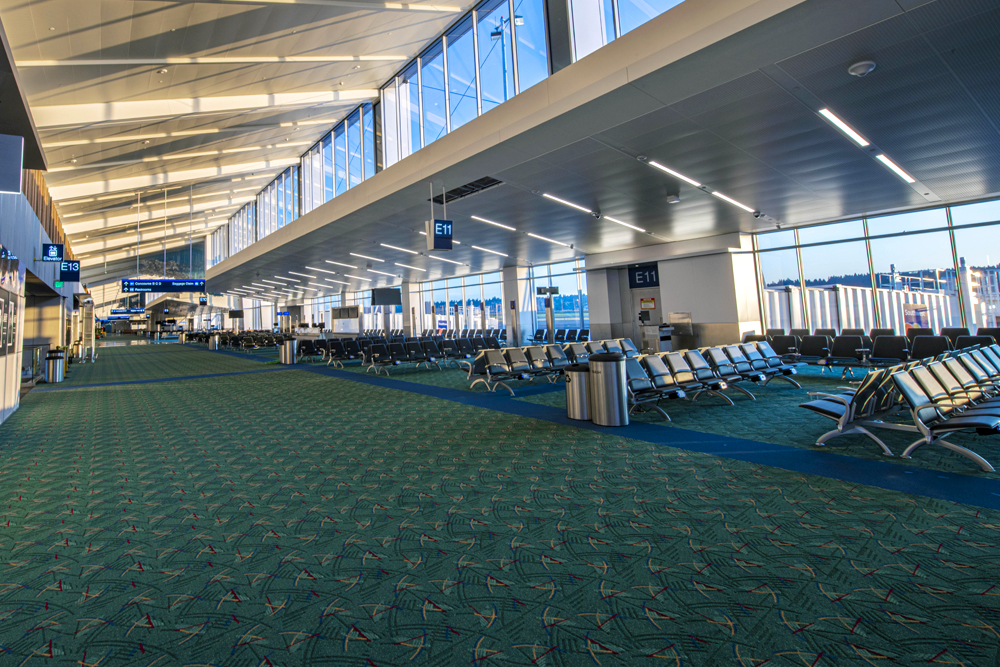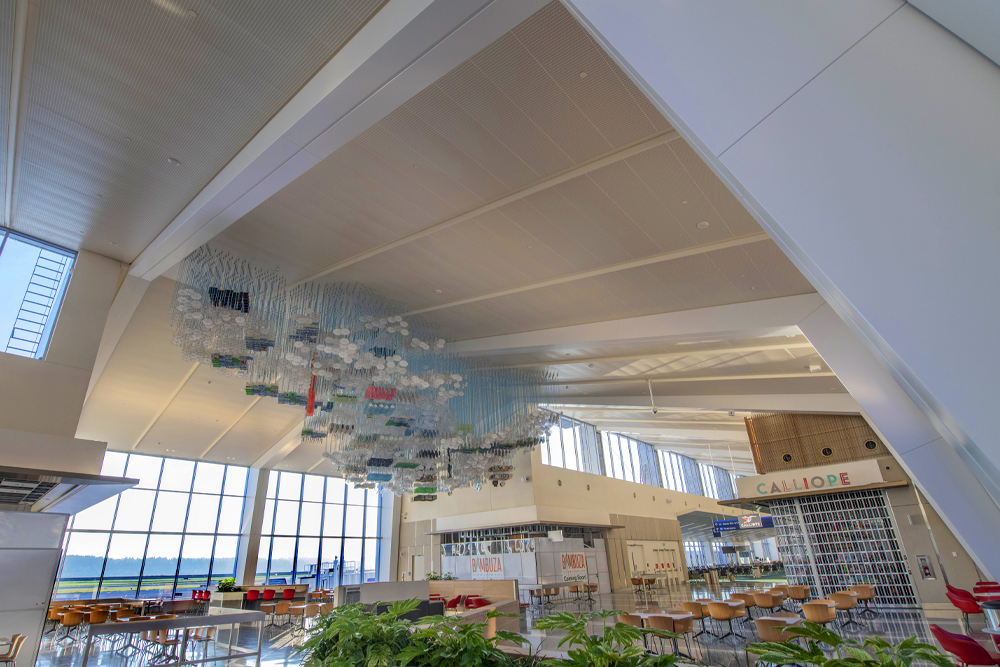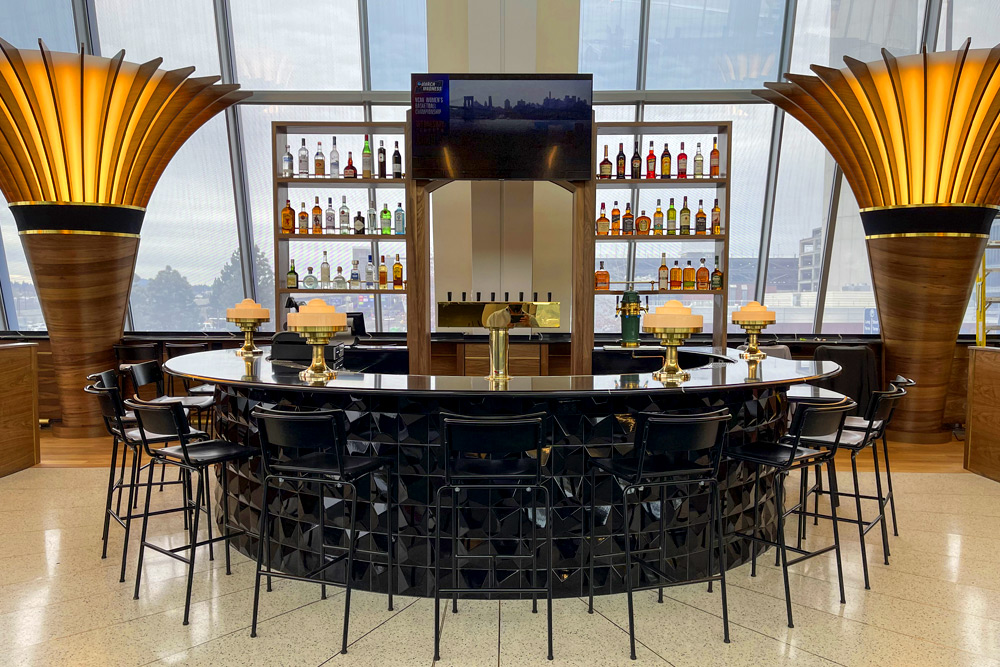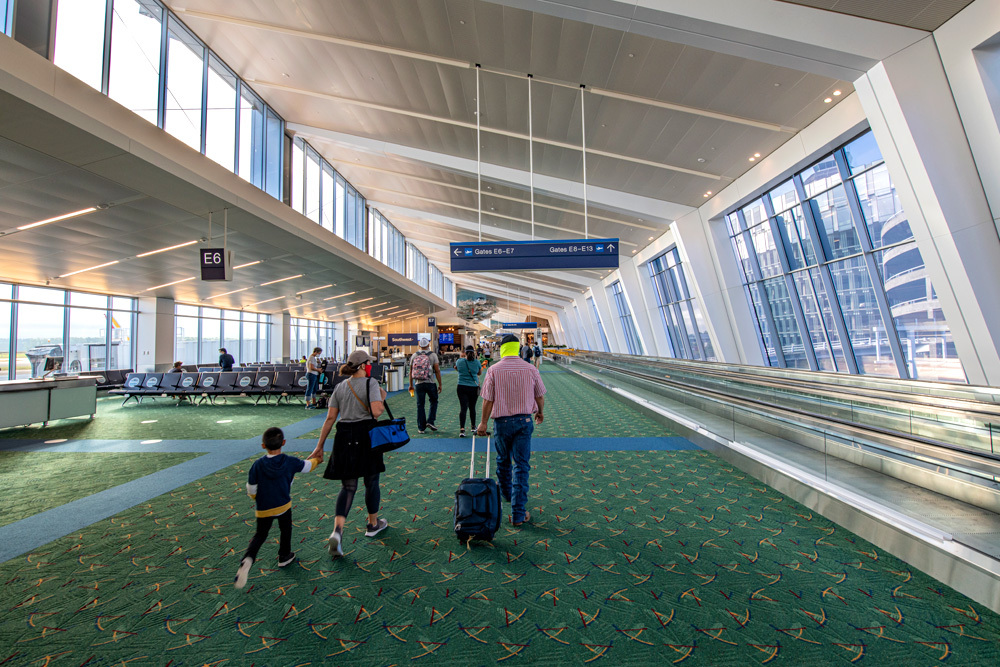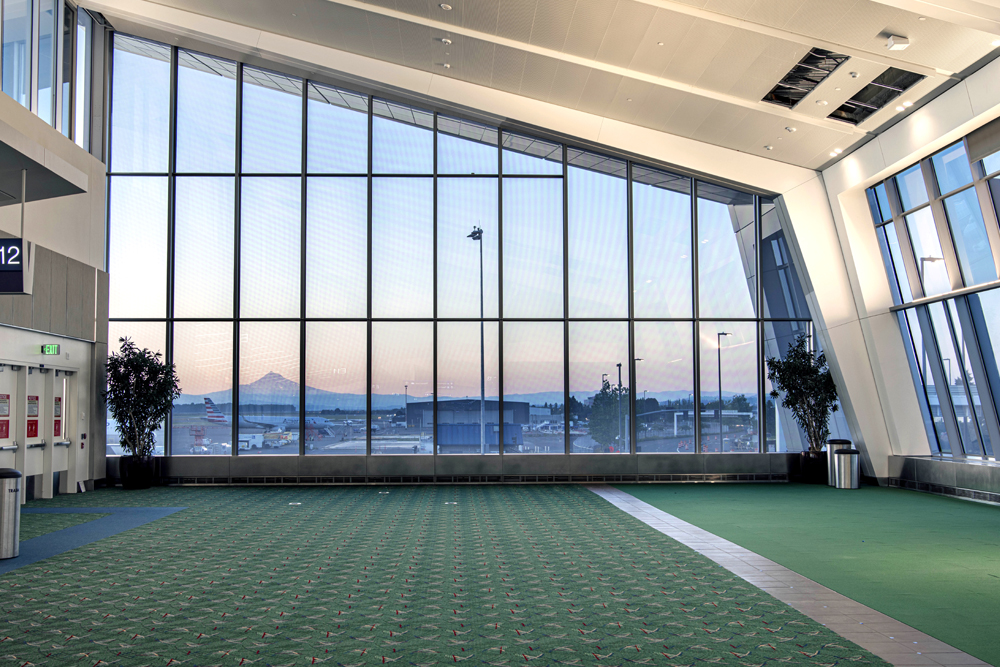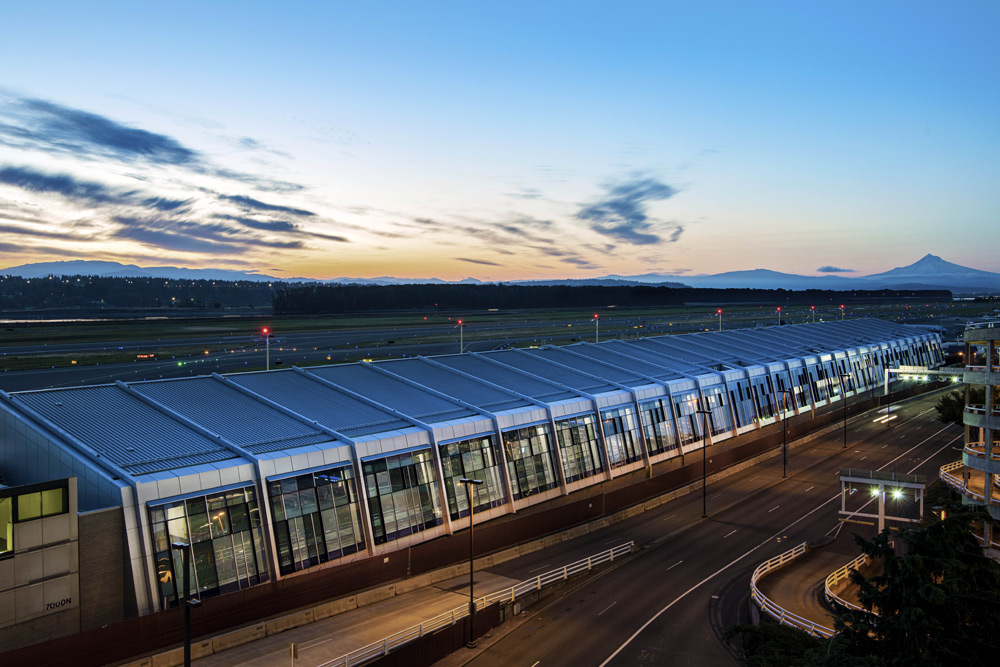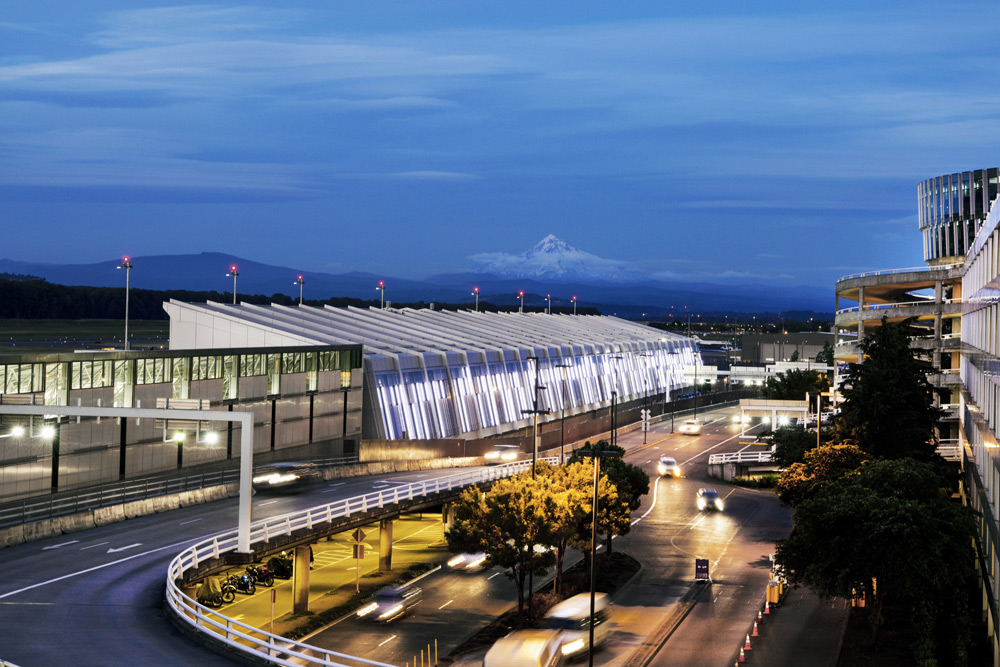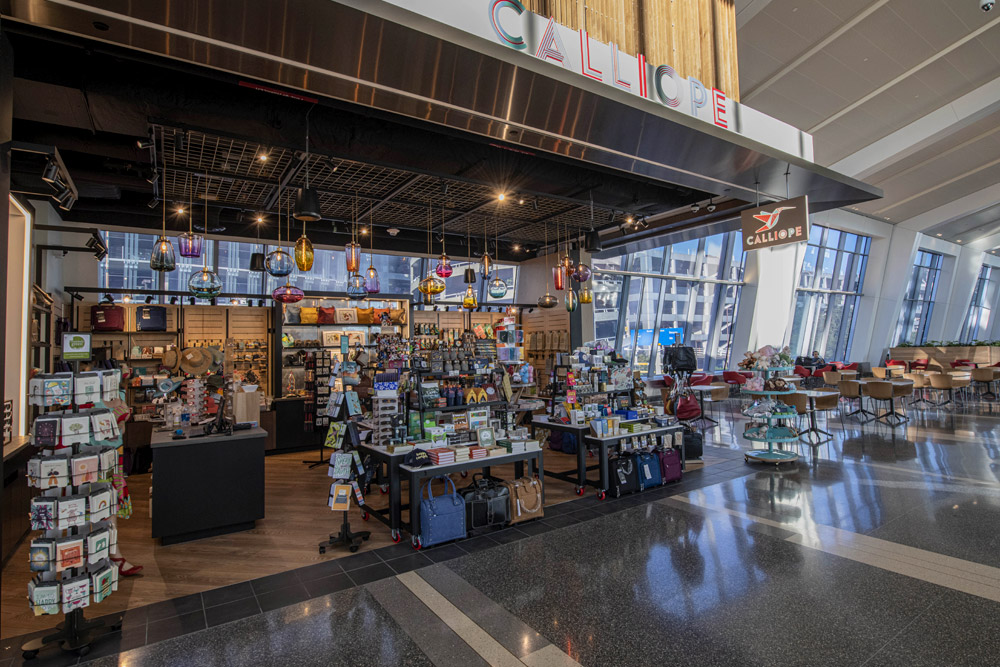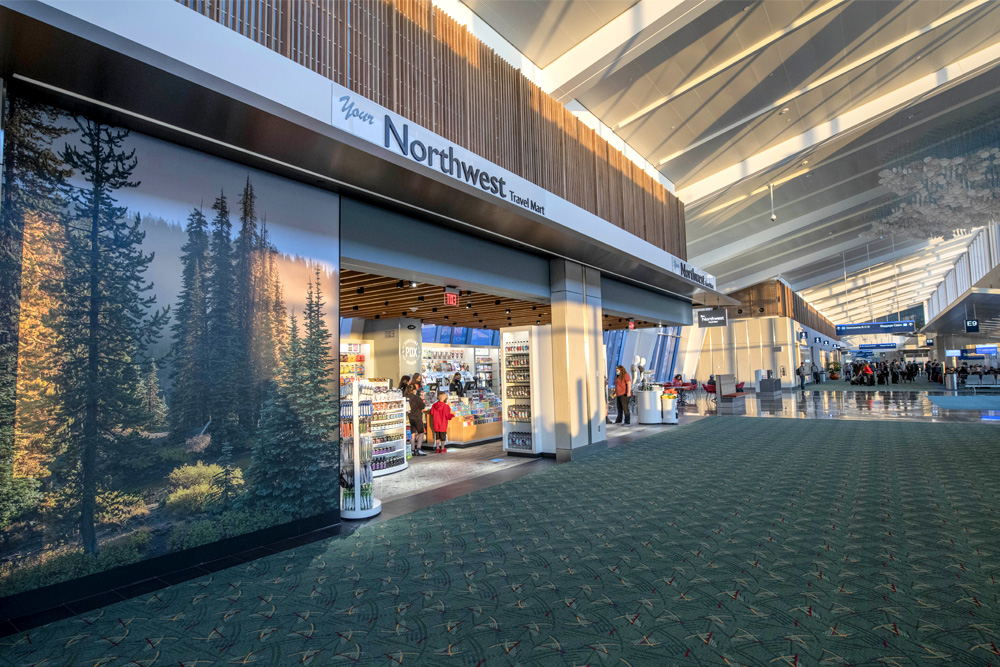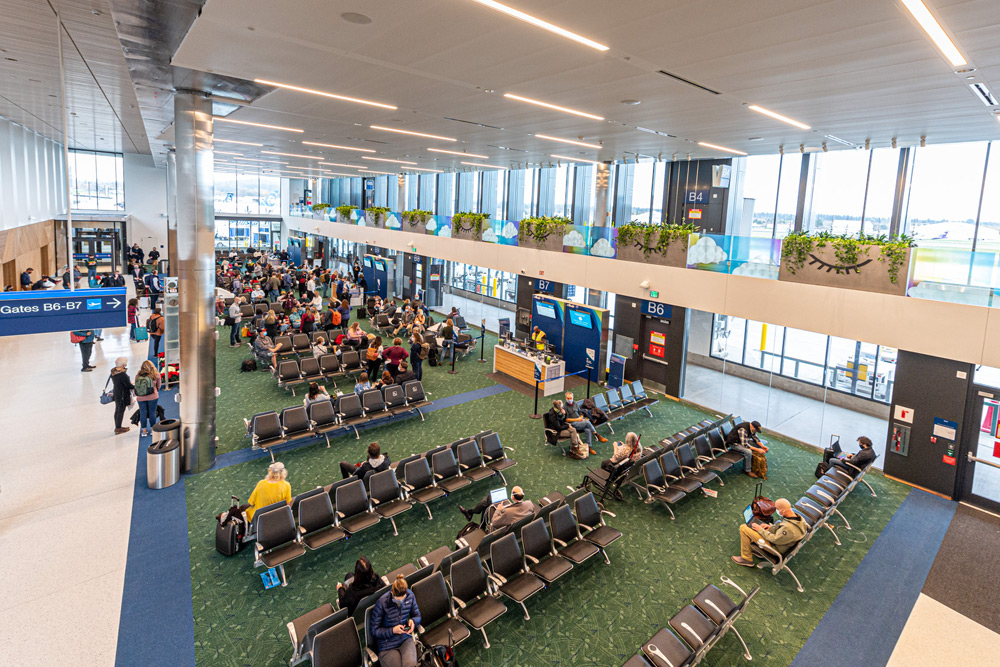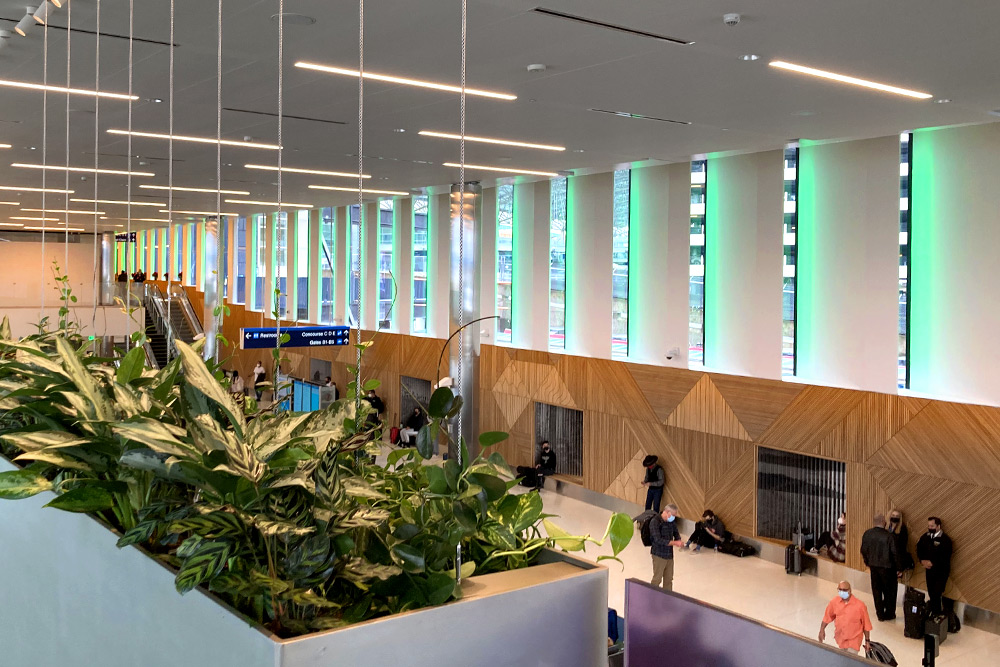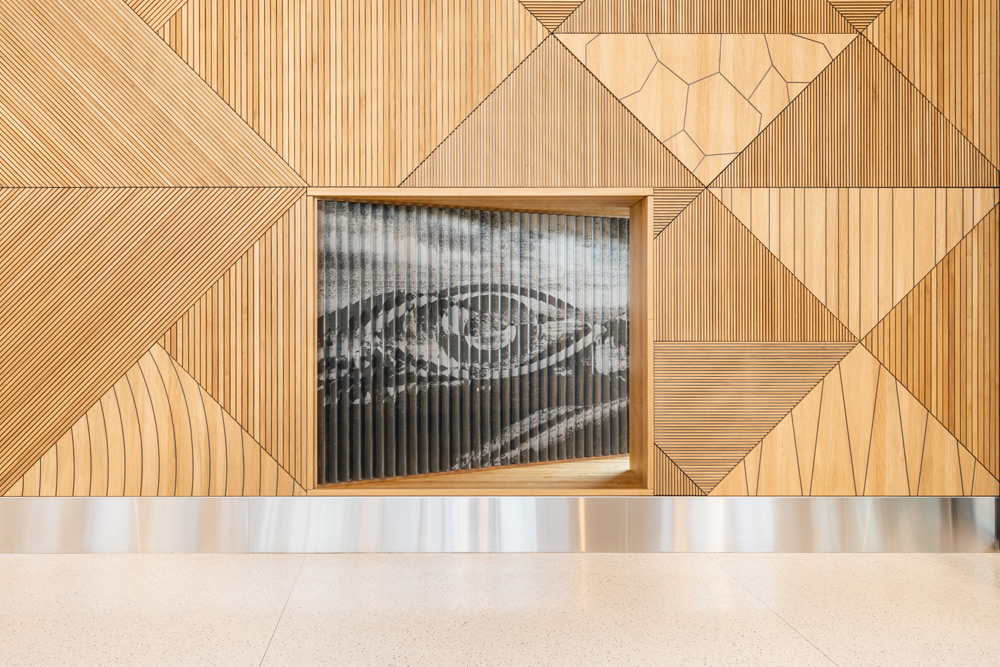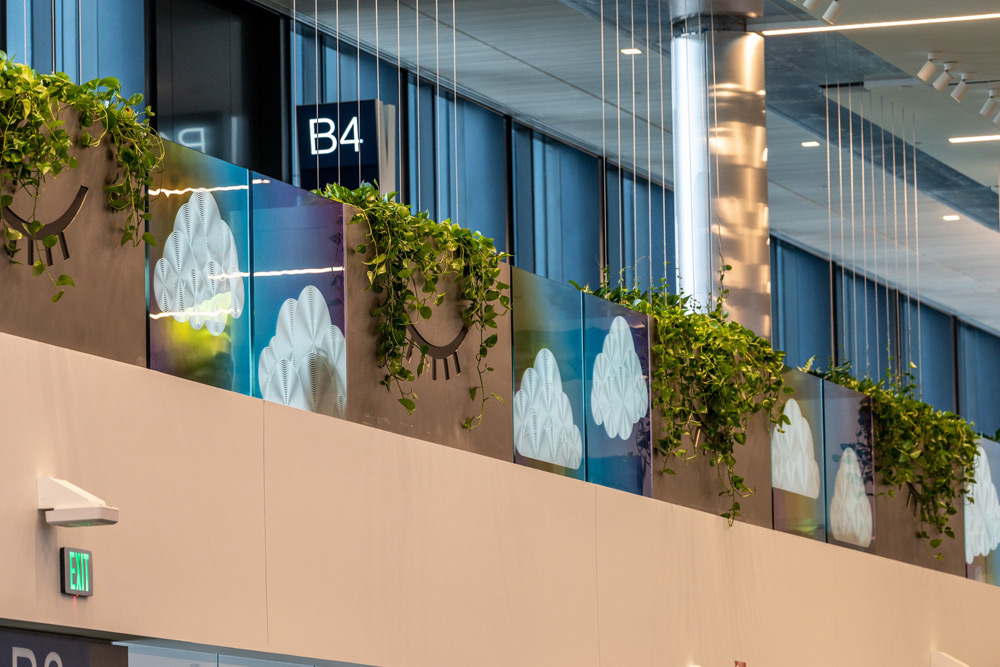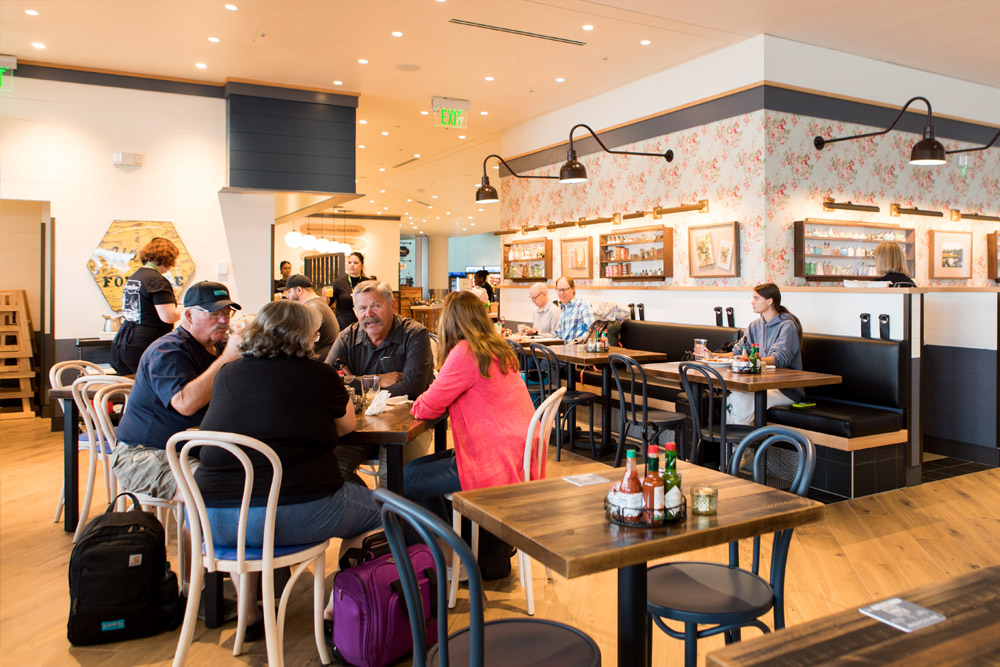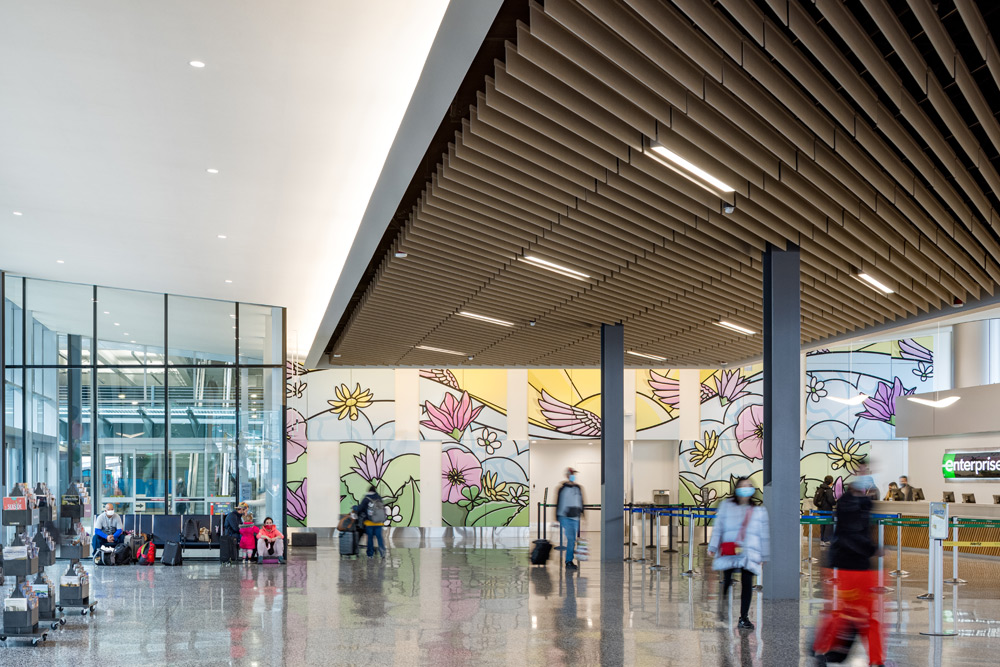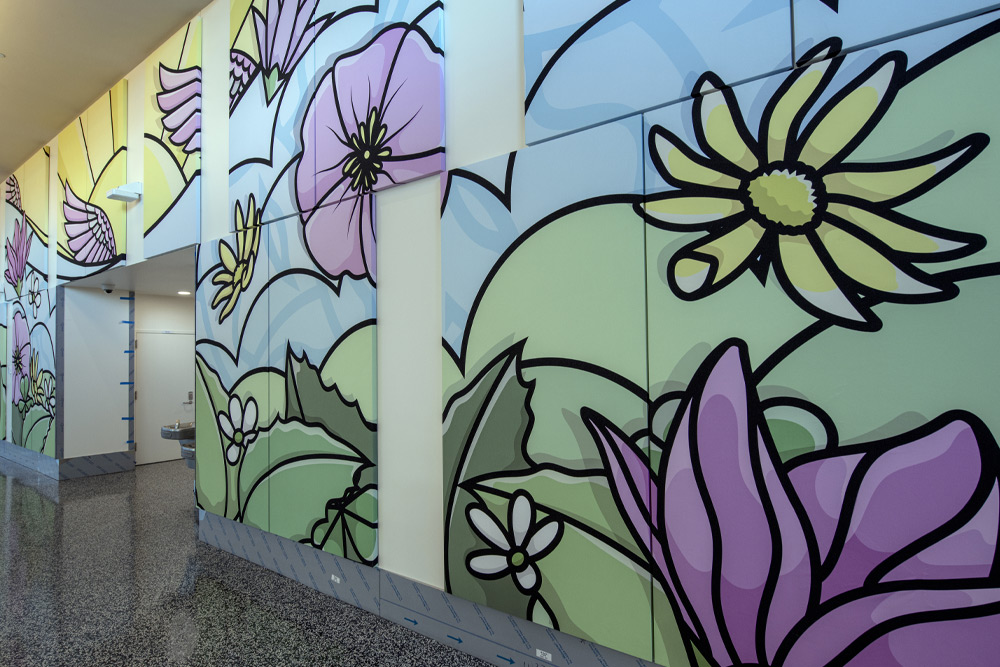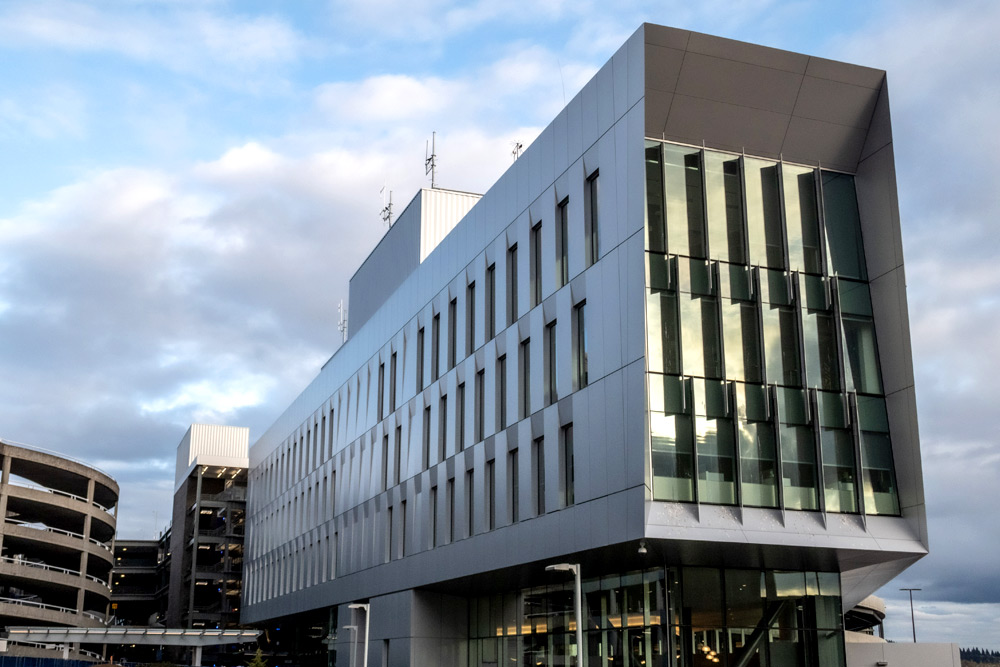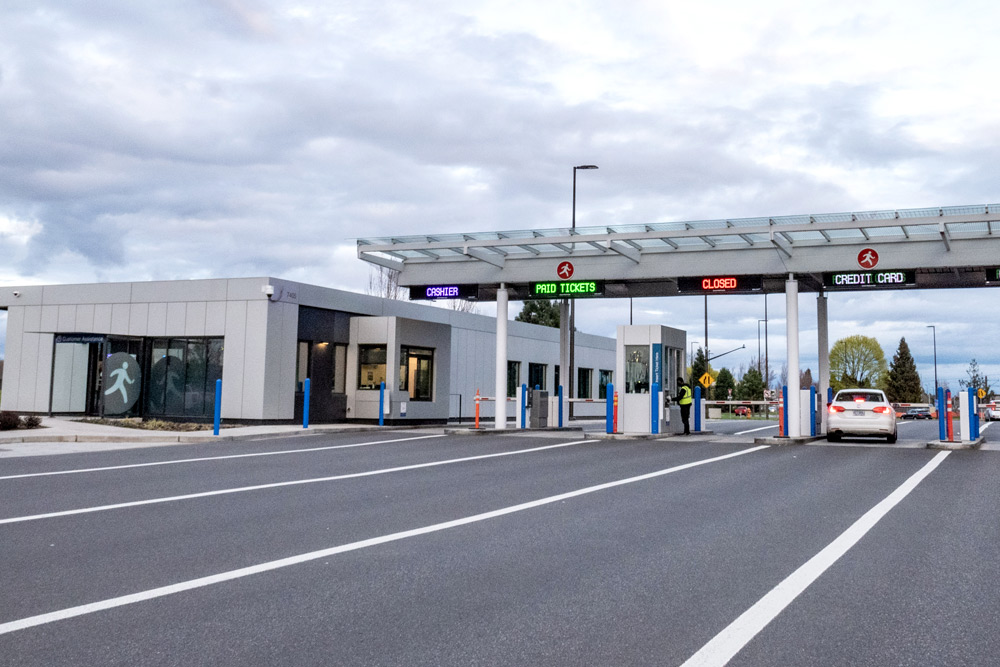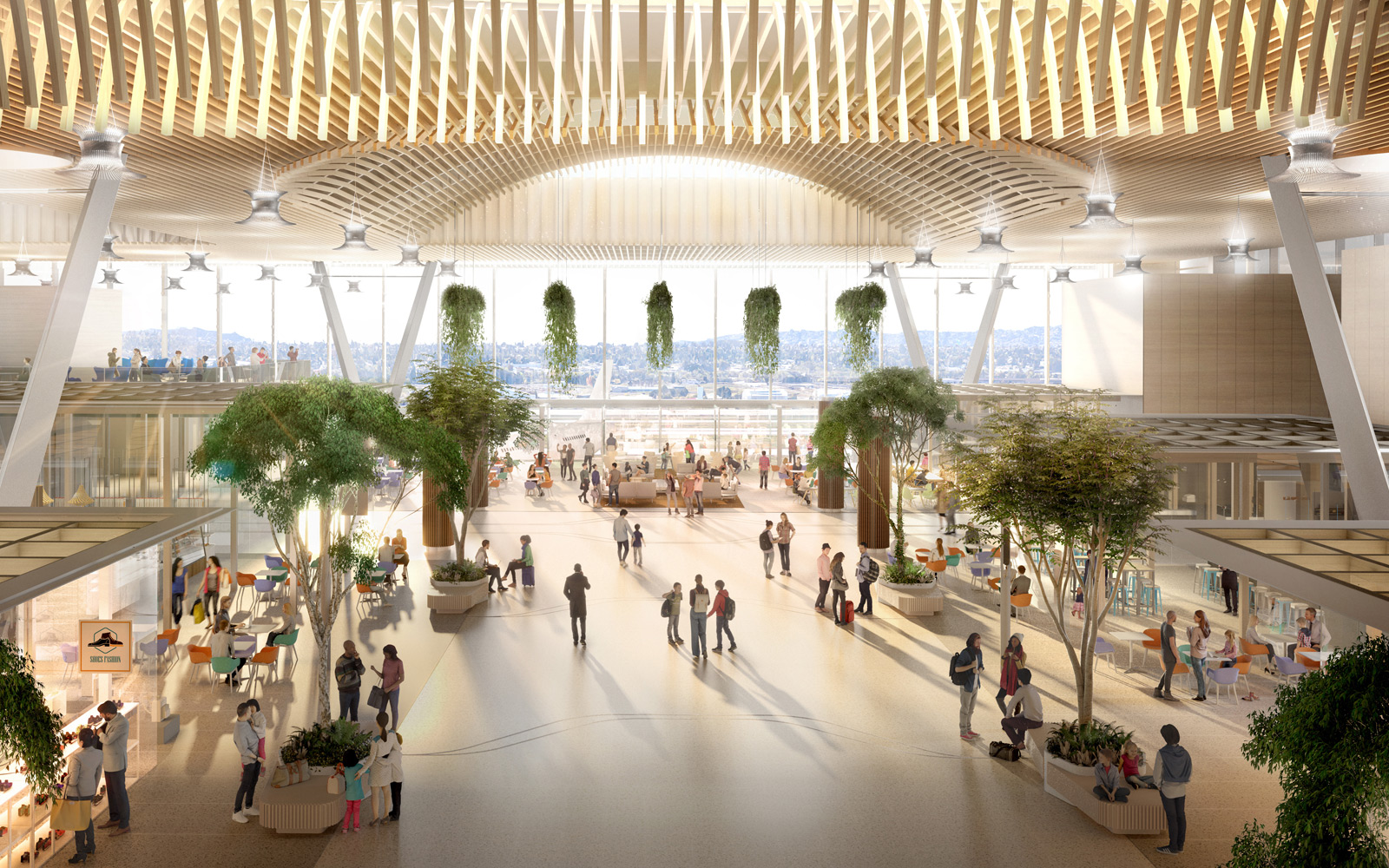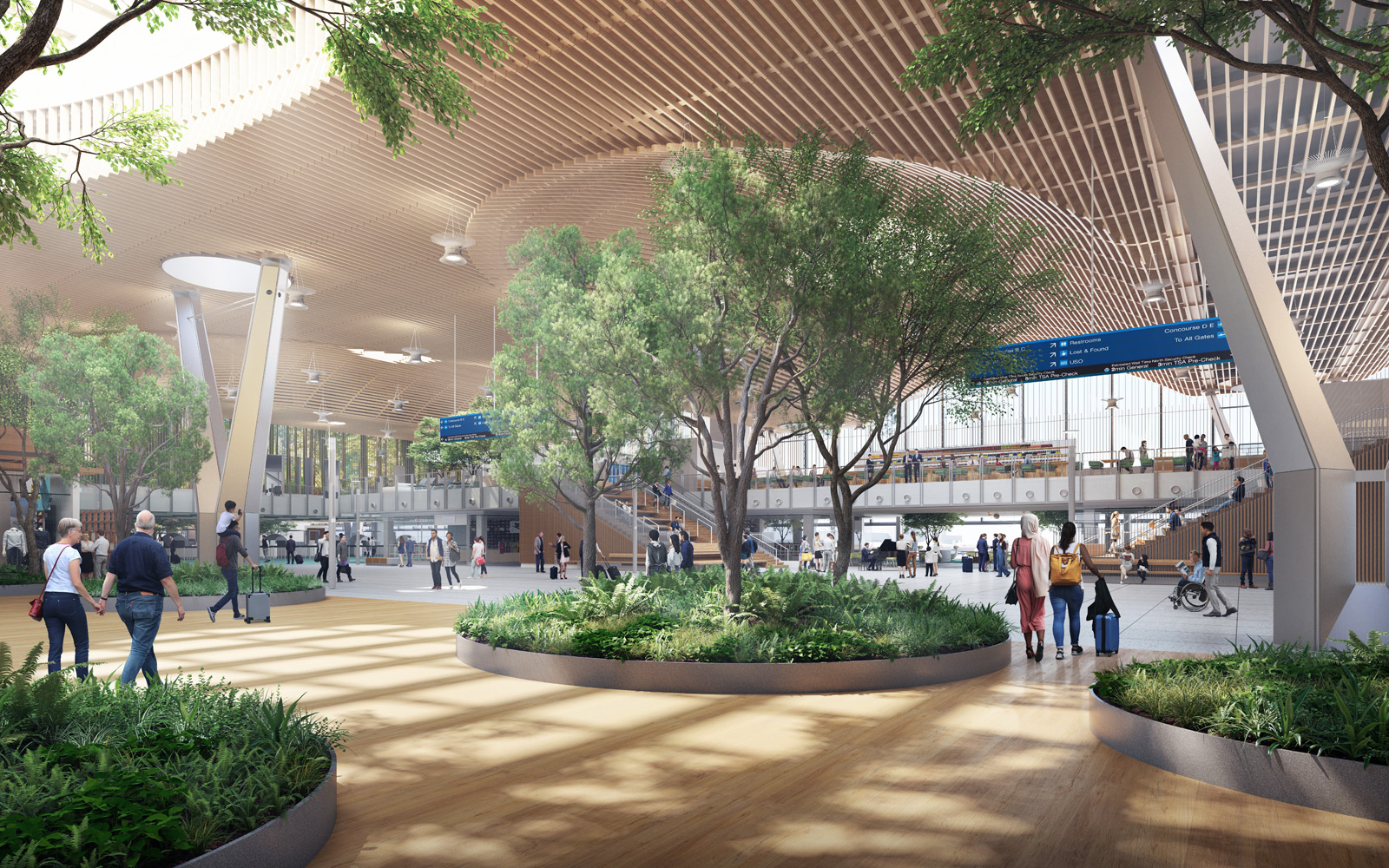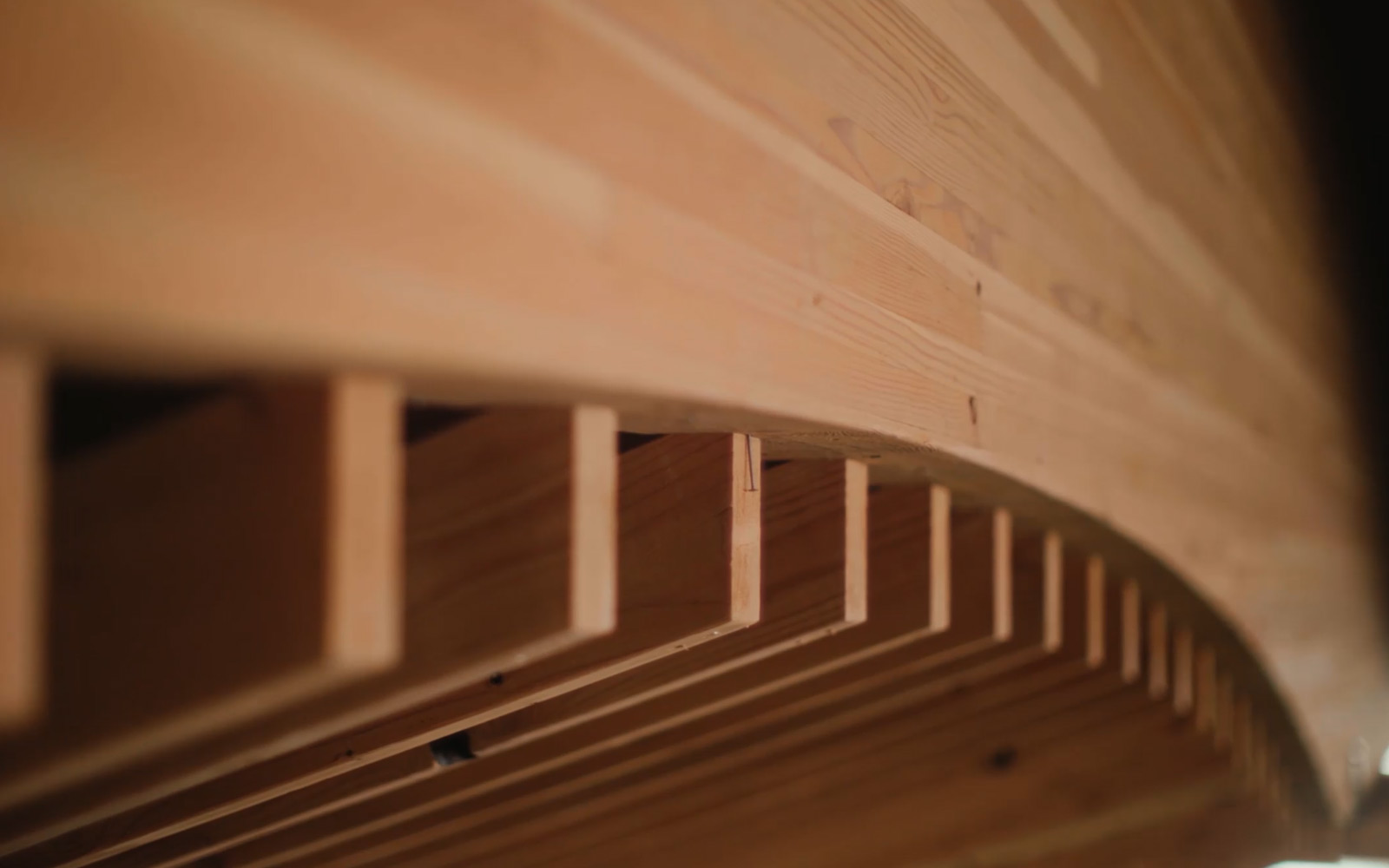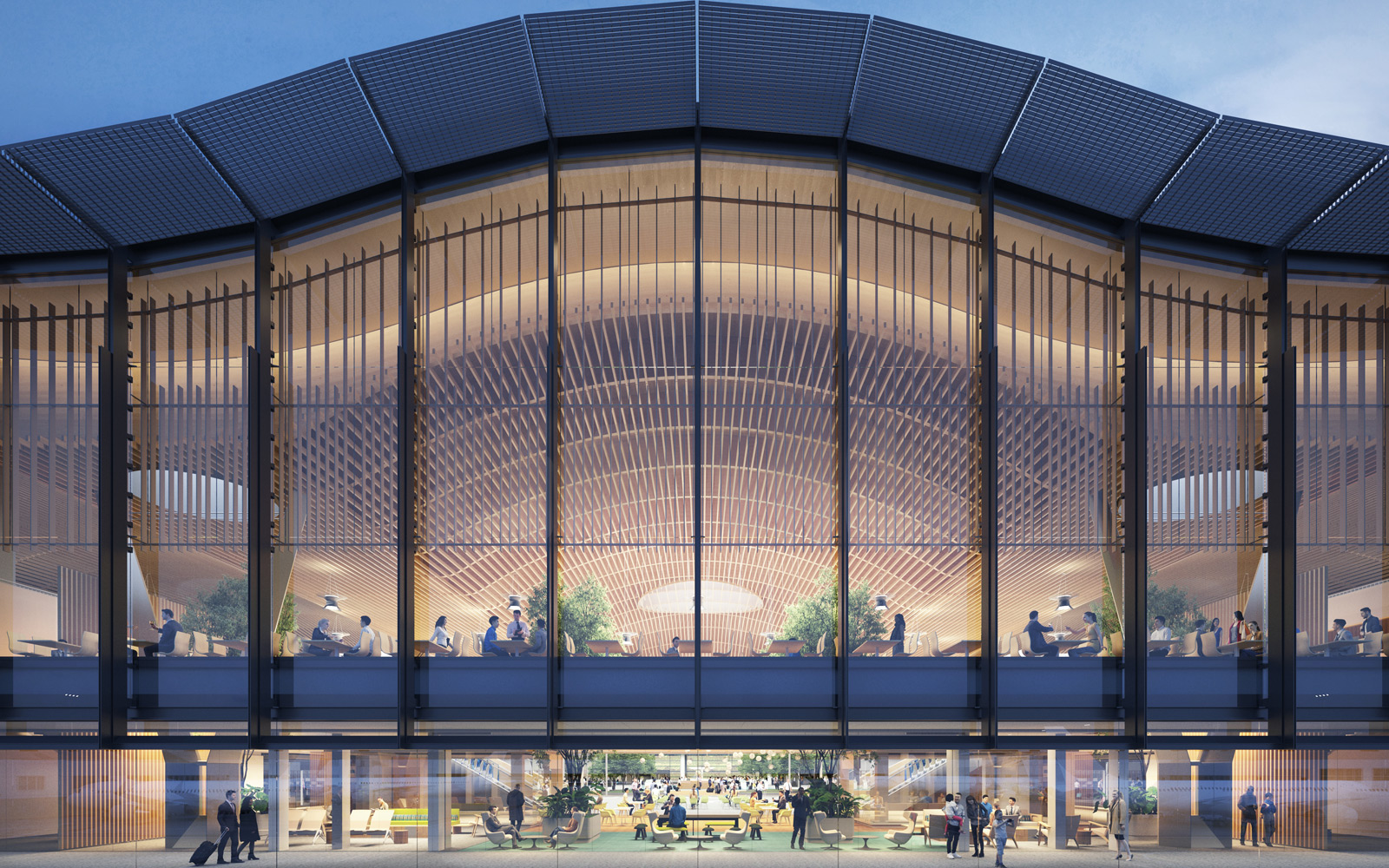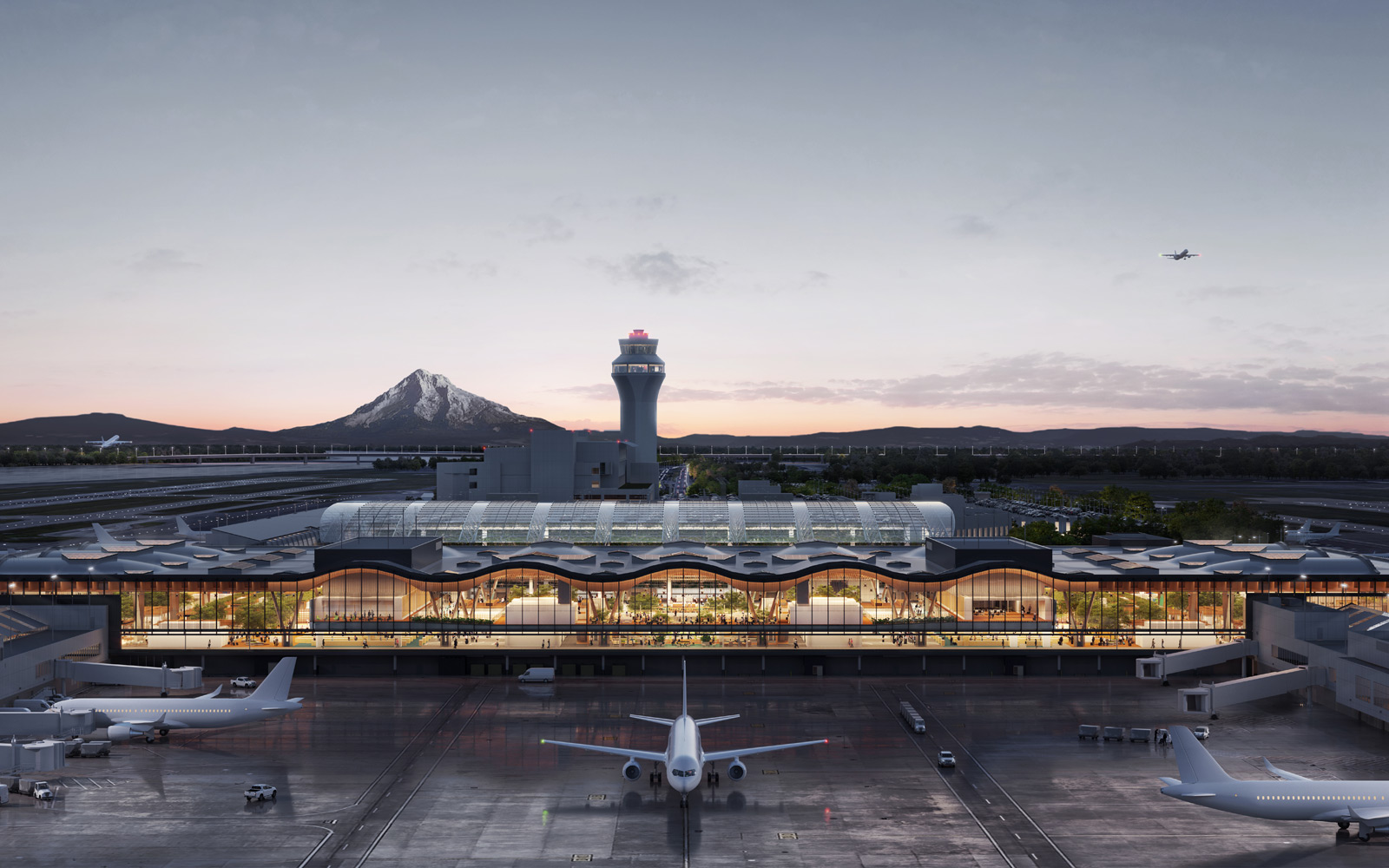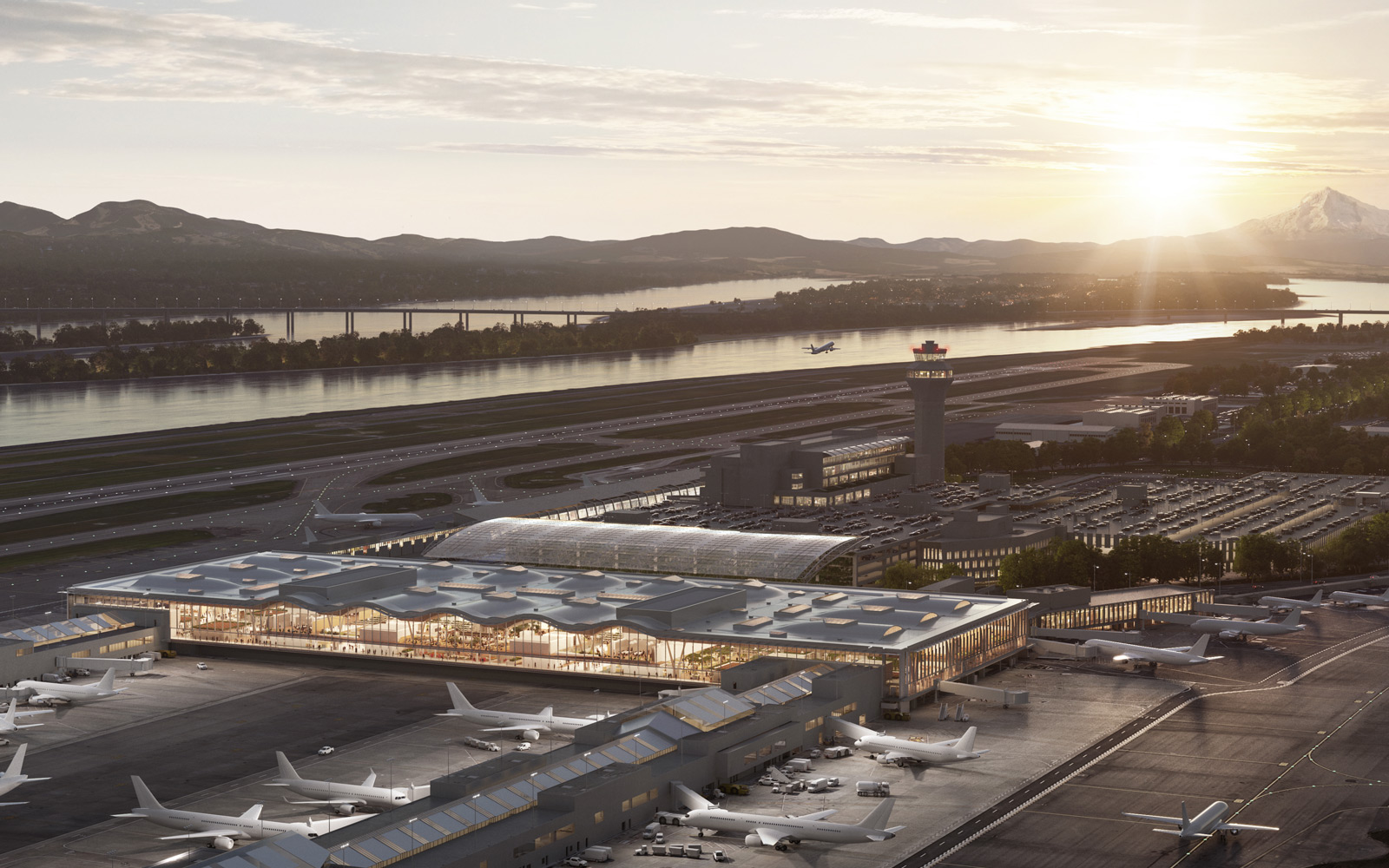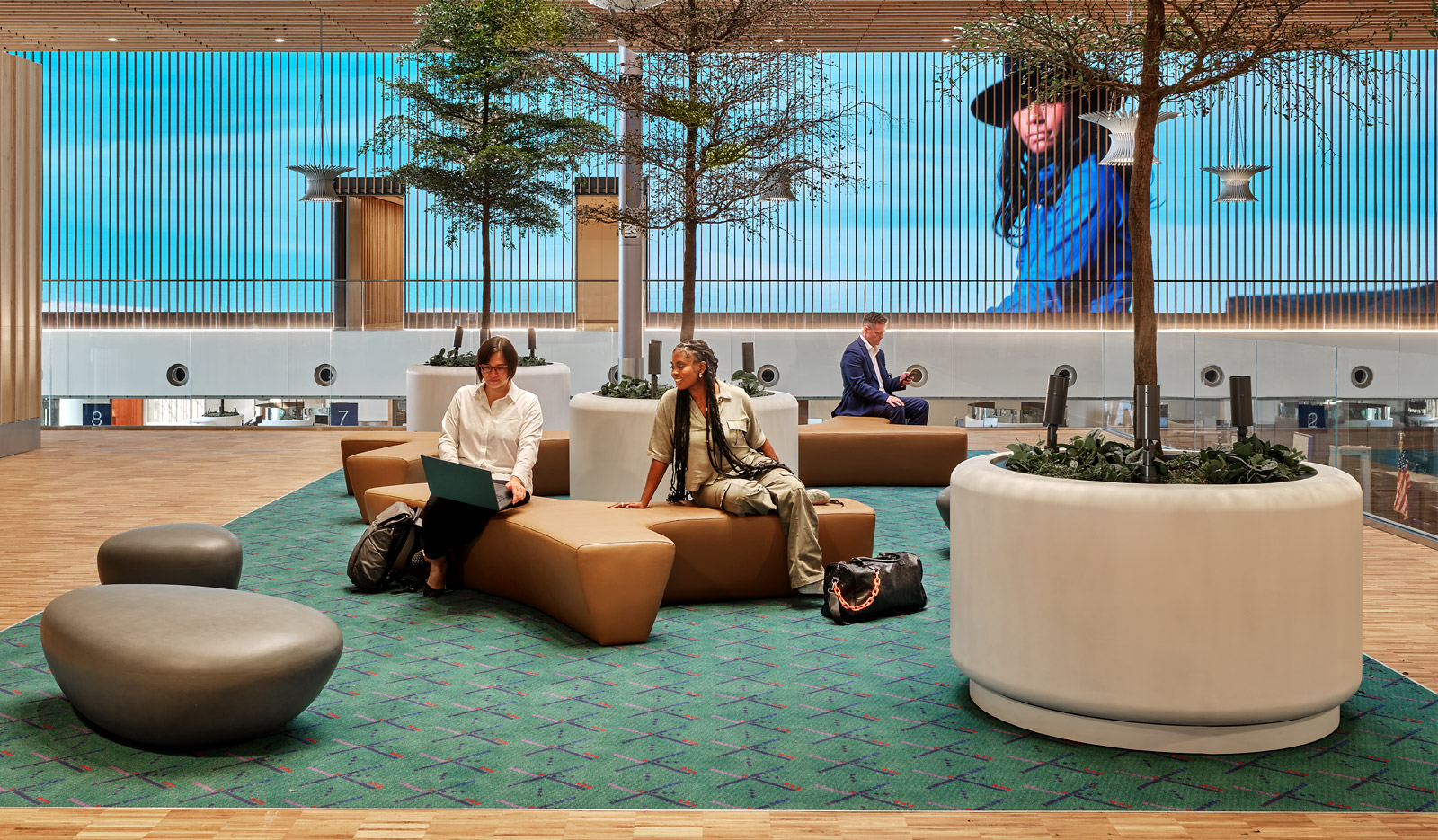
Glance up at the 120-foot-long video walls in PDX’s main terminal, and you may see an Oregon cowboy. Look away for just a minute, and the scene may shift to butterflies flitting around a misty Northwest waterfall. Stare at it all day, and you’ll never see exactly the same scene.
PDX’s two new video walls, which stretch above the security checkpoints, display a 24-hour art installation. “Extraordinary Windows,” as the piece is titled, mixes short artworks created specifically for PDX with Oregon-inspired landscapes that change according to the time of day, the weather, and how many people are traveling through PDX.
We asked the Portland artists who led the creation of “Extraordinary Windows'' to tell us more about their vision for the piece, which is designed to entertain travelers and, perhaps, inspire them to take a few deep breaths. Martha Almy, the founding partner of Portland’s Half Sister Studios, is a creative producer who specializes in immersive media for public spaces and museums. Fernanda Navilli is a creative director at dotdotdash who specializes in using cutting-edge technologies to create experiences.
PDX: What will people see on the video screens when they’re standing in line at security or sitting on the stadium seats?
Martha Almy: We wanted to provide a unique lens on our region and celebrate our region’s diversity, both in terms of nature but also perspectives. There are two key components. The first is what we’re calling “evergreen content,” which is an application that displays data-influenced imagery. We juxtaposed that against depictions of the region [created] by three artists.
In the evergreen content, there are six scenes, each one inspired by a different area of our region: forests, mountains, waterfalls, coast, desert, night sky. But they’re actually not videos.
Fernanda Navilli: We used Unreal Engine, which is software used to create 3-D video games, to make a cinematographic piece that is as realistic as can be. I and my creative partner, Augusta Dayton, traveled more than 900 miles across Oregon and hiked for more than 40 miles to make sure we captured every detail correctly, from the way the light hits the forests around Mt. Hood to the texture of the Painted Hills at sunset.
As time passes throughout the day, our content changes, too. The sun actually moves in the scenes. If it's raining outside in Portland, it will be raining in our forests.
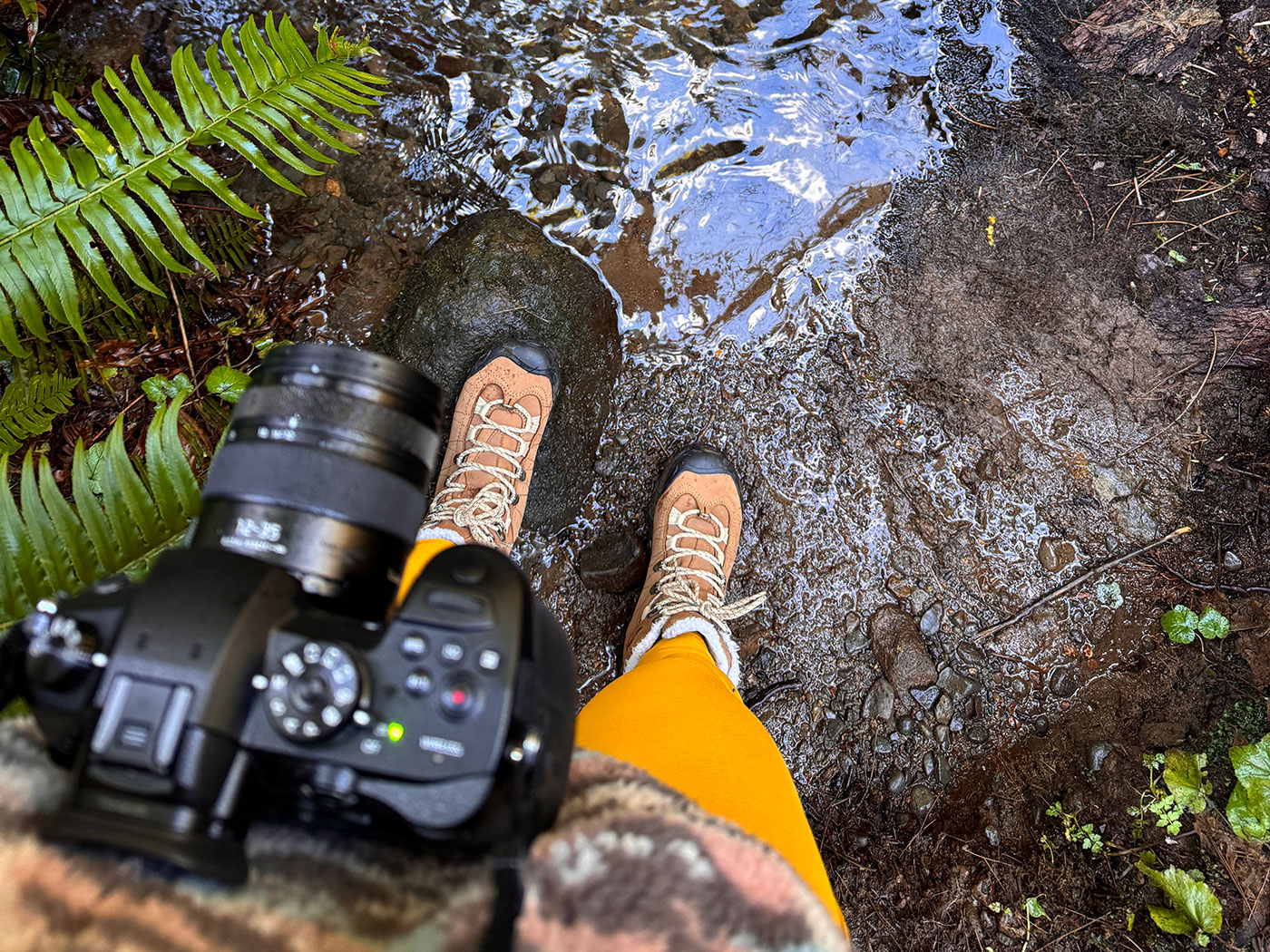
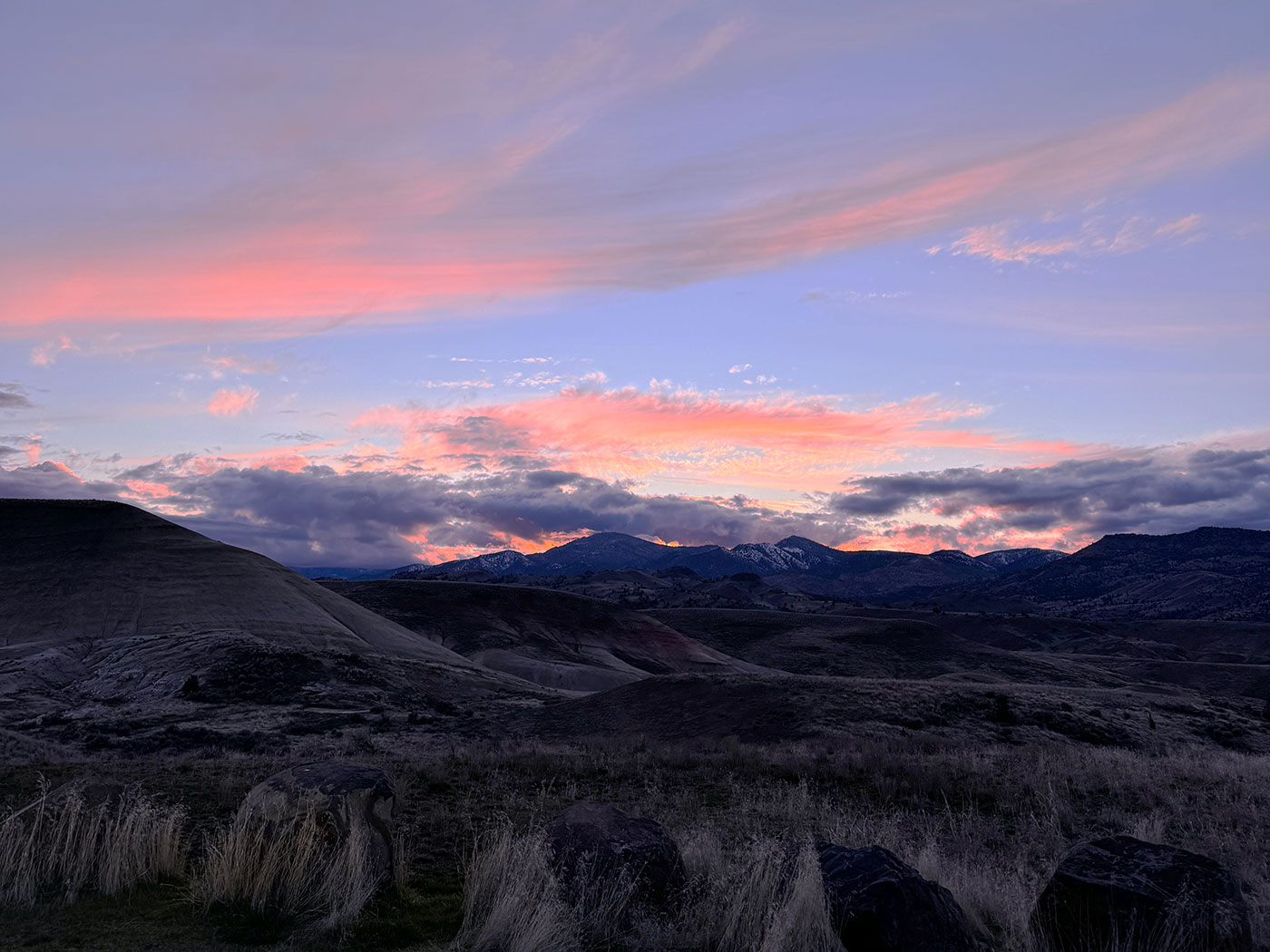
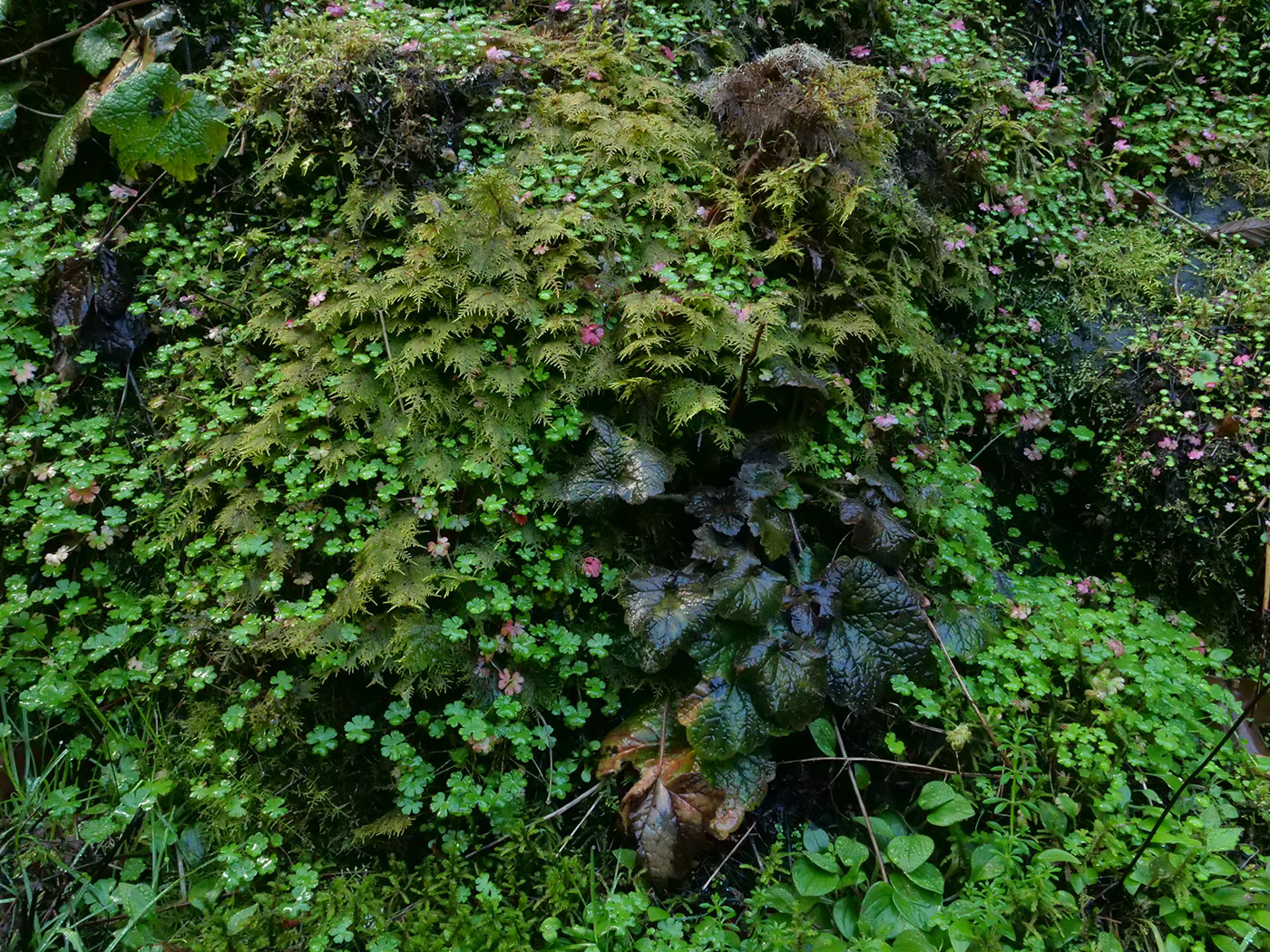
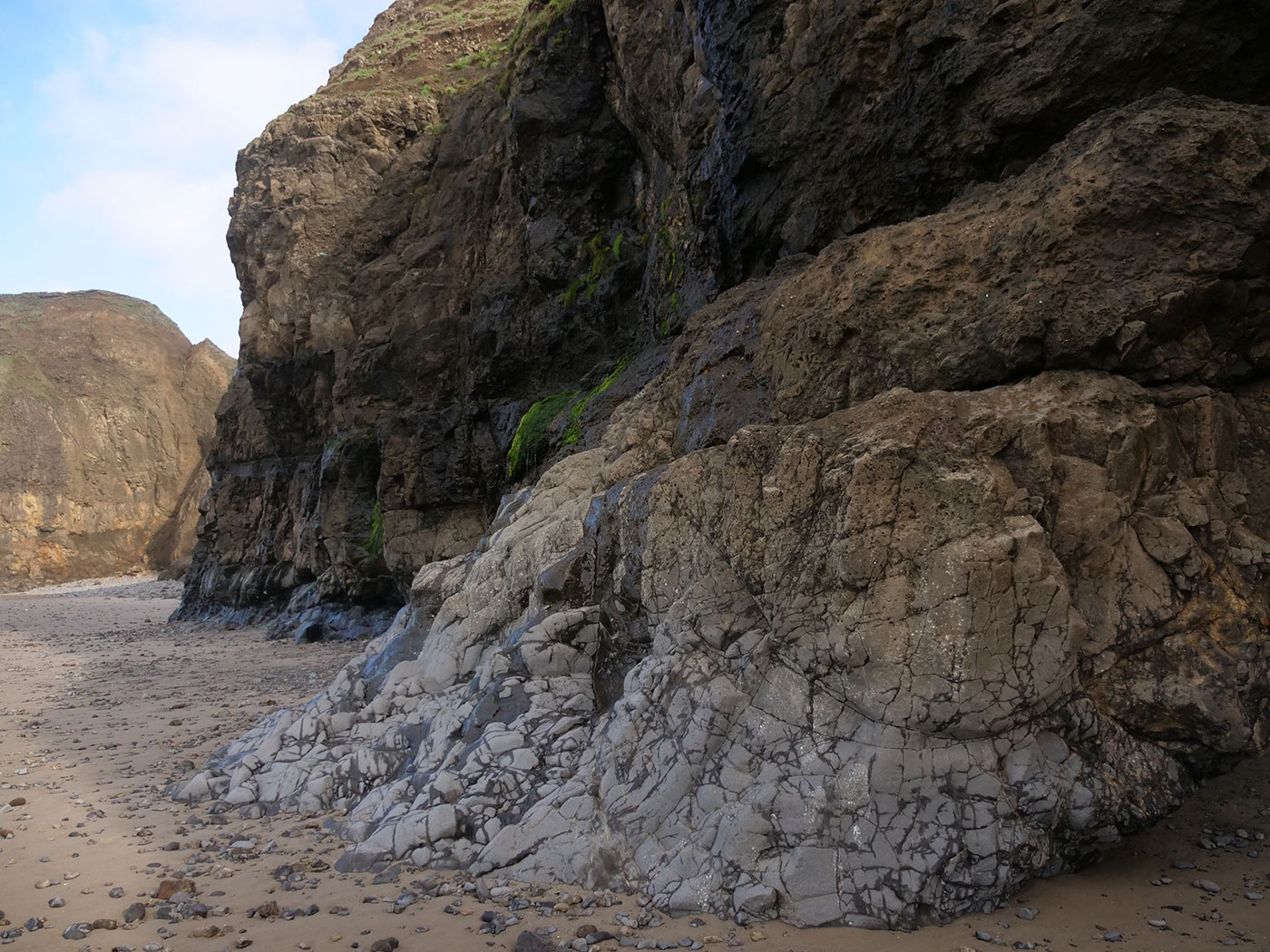
Who are the artists who have created video pieces for the wall?
Martha: All three are masterful digital storytellers. Ivan McClellan, who also organizes Oregon’s 8 Seconds Juneteenth Rodeo, has become known for his photographs of Black cowboys all over America. This is his first film, a vignette about Black cowboys in Oregon. Over the course of the year, works from Rebecca Méndez and Brad Johnson will appear as well.
There’s no single voice that can represent what it means to be from this area. We were very excited about the opportunity for multi-voice storytelling.

We’ve heard you included “easter eggs,” or little details, for people to notice if they’re paying attention.
Fernanda: In the forest scene, the growing chanterelles reflect how humid it is outside and how busy the airport is. If today has rained, for instance, you would see more mushrooms. Similarly, in the waterfall scene, the number of butterflies represents how busy the airport is. There’s a puffin on the coast, and a few deer that you can spot. Some of them are pretty hidden. It’s going to be fun to see if people find them or not.
What's your hope for how travelers experience “Extraordinary Windows”?
Fernanda: I hope that it will bring them a moment of pause, where you can stop all the turbulence of traveling and feel really present for a few moments. If I were to hope for a lasting impact, it would be for people to feel how big and how diverse nature is here.
Martha: We hope people will feel proud to live in this place. And if they’ve been here only once, and they only got to the coast, if they see Punchbowl Falls they’ll say to themselves, “Oh, I really want to come back to Oregon again.” We’re also hoping that the artists’ work will make them want to find out more about this region, which has so much to offer.
